
bad_Q
-
Numero contenuti pubblicati
143 -
Iscritto il
-
Ultima visita
-
Giorni Massima Popolarità
1
Tipo di contenuto
Forum
Galleria
Calendario
Download
Articoli del sito
Store
Blog
Risposte pubblicato da bad_Q
-
-
Audi Q7 2015
in Audi
Press Release:
The new Audi Q7 –Sportiness, efficiency, premium comfort
- Technical Development Board Member Prof. Dr. Ulrich Hackenberg: “New Q7 is a statement of our competence in lightweight construction, efficiency and assistance systems”
- 325 kilograms (716.5 lb) lighter and around 26 percent more efficient
- First diesel plug-in hybrid with quattro drive
Audi Q7
With the new Q7*, Audi is setting standards in the premium SUV segment. 325 kilograms less weight and the low center of mass make it extremely agile. At the same time, it is the most spacious car in its segment. Although the exterior dimensions have gotten smaller, it offers substantially more interior room for passengers and luggage. Its innovative assistance and infotainment systems take the SUV to the front of the pack. The efficient engines consume 26 percent less fuel on average.
Prof. Dr. Ulrich Hackenberg, Audi Board Member for Technical Development: “The new Audi Q7 is a statement of our competence. Weighing 325 kilograms (716.5 lb) less, it sets the benchmark in its class. It is around 26 percent more efficient and is equipped with the latest assistance systems, infotainment modules and connect features.”
With a curb weight of just 1,995 kilograms (4,398.2 lb) (as 3.0 TDI), the new Audi Q7 is the lightest in its class. It weighs 325 kilograms (716.5 lb) less than the previous model. With its lightweight, multimaterial body and an all-new chassis, it is comfortable while at the same time offering the typical performance of a sporty Audi – and that with top-notch CO2 values. Audi engineers have reduced the fuel consumption of the Q7 by as much as 28 percent (TFSI) and 23 percent (TDI).
The engines set top marks in the segment of large SUVs with all-wheel drive. The 3.0 TDI with 200 kW (272 hp) and the 3.0 TFSI with 245 kW (333 hp) accelerate the new Audi Q7 from 0 to 100 km/h (62.1 mph) in 6.1 seconds (TFSI) and 6.3 seconds (TDI), respectively. The diesel V6 consumes on average just 5.7 liters of fuel per 100 kilometers (41.3 US mpg), corresponding to 149 grams of CO2 per kilometer (239.8 g/mi).
The Audi Q7 also sets standards with respect to the operating concept, infotainment, connectivity and driver assistance systems. The second-generation modular infotainment platform is on board, as is the Audi virtual cockpit. The new MMI all?in?touch control unit with large touchpad makes operation child’s play. Other attractive innovations include the expanded services from Audi connect, the Audi tablet for the rear seat passengers and the two sound systems with 3D audio. Smartphone integration with Google Android Auto and Apple CarPlay is also new. The new Audi Q7 is one of the first cars worldwide to offer these functions.
One highlight is the comprehensive portfolio of new driver assistance systems, including adaptive cruise control with traffic jam assistant. No other production vehicle in the world currently offers more.
The Audi Q7 e?tron quattro, which will be launched a short time later, is the first plug in hybrid from Audi with a diesel engine. It impresses with system 275 kW (373 hp) of system output and a system torque of 700 Nm (516.3 lb?ft), and is also the world’s first diesel plug?in hybrid with quattro all?wheel drive in the premium SUV segment. It consumes just 1.7 liters per 100 kilometers (138.4 US mpg), which corresponds to less than 50 grams CO2 per kilometer (80.5 g/mi). A full battery charge is sufficient for a distance of 56 kilometers (34.8 mi).
The new Audi Q7.
Audi presents the new Audi Q7* at the North American International Auto Show in Detroit. With the second generation of the large SUV, the brand with the four rings is setting new standards in its market segment. The drivetrain, chassis, lightweight construction, assistance systems and infotainment impress with innovative technology. The new Audi Q7 is up to 325 kilograms (716.5 lb) lighter than its predecessor and reduces CO2 emissions by as much as 50 grams per kilometer (80.5 g/mi). Scheduled to follow shortly after the market launch, the Audi Q7 e?tron quattro is the world’s first plug-in hybrid with a six-cylinder diesel engine and quattro all-wheel drive.
Prof. Dr. Ulrich Hackenberg, Audi Board Member for Technical Development: “The new Q7 also marks the debut of the second-generation modular longitudinal platform, the Audi technology matrix for models with longitudinally mounted engines. Efficient development and manufacturing provide Audi with flexibility for offering new technologies and drive variants. The new Audi Q7 is a statement of our competence. Weighing 325 kilograms (716.5 lb) less, it sets the benchmark in its class. It is around 26 percent more efficient and is equipped with the latest assistance systems, infotainment modules and connect features.”
71 kilograms (156.5 lb) less weight: Body
The new Q7 is an imposing car with the best height:weight ratio in its class: 5.05 meters (16.6 ft) long, a 2.99 meter (9.8 ft) wheelbase, 1.97 meters (6.5 ft) wide and 1.74 meters (5.7 ft) tall (with steel suspension). Although it is shorter and narrower than its predecessor, the cabin is longer and offers more head room.
20 years of experience with lightweight construction flow into the new Audi Q7. Equipped with the 3.0 TDI engine, the new Audi Q7 tips the scales at just 1,995 kilograms (4,398 lb), which is 325 kilograms (716.5 lb) less weight – the equivalent of a concert grand piano. The Q7 with the 3.0 TFSI engine is even lighter, weighing just 1,970 kilograms (4,343.1 lb). Lightweight construction has been applied in all areas, from the electrical system to the luggage compartment floor. The key is the body structure, where a new multimaterial design reduces its weight by 71 kilograms (156.5 lb). This places the new Q7 among the best in its segment.
Ultra-high-strength parts made of hot-shaped steel form the backbone of the occupant cell. Aluminum castings, extruded sections and panels are used in the front and rear ends as well as the superstructure. They account for 41 percent of the body structure. Other parts made entirely of aluminum are the doors, which shave 24 kilograms (52.9 lb) of weight, the front fenders, the engine hood and the rear hatch. Audi uses new manufacturing methods for the production and assembly of the parts. The crash safety and occupant protection of the new Audi Q7 are also on the highest level.
Three torsion rings reinforce the front end, the area of the C-pillars and the rear hatch cutout. These play a major role in the vastly improved static and dynamic stiffness of the body. The torsion rings are the foundation for the precise handling and superior vibrational comfort in the car’s interior.
Quiet on board
The premium acoustic insulation reinforces the impression of solidity and elegance by providing for a unique degree of quietness in every situation. The best-in-class aeroacoustics result from the interplay between various vehicle components, such as the mirror mounted on the shoulder line.
The big SUV has a cd value of just 0.32. This top mark in the segment is the result of sophisticated technical solutions. The underbody is nearly completely lined; a small spoiler in the area of the rear axle reduces lift. The efficiency model – the V6 TDI with 160 kW (218 hp) which will be launchend at a later date – features louvers between the Singleframe grille and the top section of the main radiator. The plastic slats open and – for better aerodynamics – close as necessary. This is based on an energy-optimized controller for maximum cd advantage.
Confident: Exterior design
The proportions have changed compared with the previous model. The big SUV is 37 millimeters (1.5 in) shorter and 15 millimeters (0.6 in) narrower while virtually the same height. Inside, however, there is an additional 21 millimeters (0.8 in) between the first and second rows of seats, and head room has increased by 41 millimeters (1.6 in) and 23 millimeters (0.9 in) in the first and second rows, respectively.
The design of the new Q7 is masculine and determined. Horizontal lines extend above the wheels. These blisters are a subtle homage to the classic quattro models from Audi. The exterior mirrors are mounted on the shoulders of the doors; blades run from the front to the rear doors and bear embossed quattro logos. The rear hatch wraps around the massive, steeply raked D-pillars, a typical feature of the Q models from Audi.
The Singleframe grille is deeply sculpted and features thick crossbars. It is integrated organically into the front end. Its broad frame extends to the headlights, which feature either xenon, LED or Matrix LED technology, depending on the option chosen by the customer. The daytime running lights of the LED headlights are shaped like a double arrow. The taillights of the top model include dynamic turn signals – another Audi innovation.
New look: Trim strips and add-on parts
Four of the eleven exterior colors available for the Q7 are new. All of the trim strips adorning the body of the big SUV have a matt aluminum-look finish for a sporty, modern appearance. Bolt-on parts such as the door inlays and underbody protection front and rear come standard with a silver paint finish. In the base configuration, the bottom section of the bumpers and the wheel arches are anthracite, textured plastic. These are also available in the body color as an option. Borrowing from the bolt-on parts, the radiator grille is finished with a new, lightly structured paint that underscores the off-road character of the car.
With the second alternative – the S line exterior package – the bumpers, the air inlets, the side sills, the roof spoiler and the diffuser feature a particularly bold design. The radiator grille and the slats in the lateral air intakes feature a newly developed, progressive, dark gray, high-gloss finish that replaces the familiar high-gloss black.
Audi offers an optional power trailer hitch with trailer assistant. The new Audi Q7 has a towing capacity of 3.5 metric tons if equipped with the optional air suspension.
Broadly stretched lines: Interior design
The new Audi Q7 welcomes its passengers with an atmosphere of cultivated elegance and spaciousness. The interior design appears tautly stretched; the two?piece inlays are available in various material combinations. The double application strip in the doors provides for a sense of lightness.
The instrument panel is visually separated from the center console, supporting the sportiness and lightness of the interior.
Feeling of safety and protection: The wrap-around
A wrap-around running from the doors through the instrument panel to form a sort of protective shield gives the driver and passengers a feeling of protection. The interface components are tailored specifically to the Audi Q7. They are located on the center console, which is oriented toward the driver. The shapes and contours of the interface components harmonize well with the interior architecture. The lines of the air vents point to the instrument cluster and further reinforce the driver orientation.
The ambient lighting uses LEDs exclusively. A second variant of the ambient lighting is available as an alternative. Ultra-narrow light guides follow the contours on the instrument panel and in the doors (including exit warning) as standard, and in an upgrade option they also include the center tunnel console. Now for the first time this lighting can be controlled via the MMI. In the top package, various colors can be selected.
Color and equipment: Diverse equipment variants
With the colors and materials used in the Q7, Audi is showing a new expression of lightness, sportiness and luxury in the premium SUV segment. The instrument panel is separated horizontally into two colors, which enables brighter colors to be used on the bottom. There are seven interior colors from which to choose. The two-piece application strip is available in a variety of material combinations. Besides high-quality effect finishes, there are a number of aluminum and wood variants from which to choose, including Beaufort walnut. Audi offer a choice of fabric, Alcantara, robust Cricket leather and fine Valcona leather for the seat coverings.
For customers seeking even more individuality, Audi offers three leather packages and two design selections. One elegant and one sporty design include full leather with contrast stitching, Alcantara headlining, luxury velour floor mats plus exclusive color and material combinations and application strips. The Audi exclusive range offers many additional customization options.
Even more room than in the previous model: The space concept
With the longest cabin in its class despite shorter exterior length, the new Audi Q7 offers more space than its predecessor. Passengers enjoy more head, shoulder and knee room. The space concept is highly variable. Audi provides an extremely comfortable three-seat unit with adjustable seatbacks for the second row. If desired, all three seats can each be moved longitudinally up to 110 millimeters (4.3 in), 10 millimeters (0.4 in) more than before.
Another option is for two individual seats in the third row that are certified as Group 3 child seats. These turn the Audi Q7 into a seven-seater with even greater utility. 24 millimeters (0.9 in) more head room and 20 millimeters (0.8 in) more shoulder room provide for more space. With the seats folded down, the seat backs are integrated into the cargo floor and can be raised or lowered electrically using rocker switches ergonomically located in the area of the C-pillars and in the cargo compartment.
For optimal access to the third row, the seats in the second row can be folded down and tipped up on edge as a compact package, providing an entry width of 376 millimeters (14.8 in). All seats in the second and third rows have Isofix/i-Size fixtures for child seats. Customers can thus mount up to six child seats in the new Audi Q7. Roller blinds and dark “privacy” glazing is optionally available for the rear. The panoramic glass sunroof – another option – makes the generous interior even brighter and airier.
If all seven seats are occupied, the cargo compartment of the new Audi Q7 has a capacity of 295 liters (10.4 cu ft), 770 liters (27.2 cu ft) in load configuration. The five-seater offers 890 liters (31.4 cu ft) and 2,075 liters (73.3 cu ft) with the second row seat backs folded down. To improve the usability of the cargo compartment, the developers lowered the loading lip by 46 millimeters (1.8 in) compared with the previous model. A power rear hatch is standard. In combination with the advanced key, Audi also offers gesture control – a kicking motion in the center below the rear hatch and the hatch opens automatically. The same foot gesture can also be used to close the hatch again.
A number of other options are available for making interactions with the big SUV practical and convenient: a power cargo compartment cover, power door closers and a heated windshield.
Fewer buttons for optimal ergonomics: Operation and display
All controls are framed in fine aluminum lines. They harmonize perfectly with the architecture – a reduced number of buttons while at the same time offering optimal ergonomics. Front seat choices are standard seats, standard seats with climate function, sport seats, sport seats with pneumatics and the custom contour seat. The design of the second and third row can be adapted to the variants chosen for the front seats.
The front seats offer driver and passenger plenty of space and comfort. Among the seat variants offered by Audi in the new Q7 are the multi-adjustable sport seat and the climate-controlled individual contour seat with up to 18 adjustments and optional massage function. The latter includes five different programs, each with a choice of five intensity levels.
Newly developed: Deluxe air conditioning
Audi equips the big SUV standard with a newly developed, two-zone deluxe air conditioning system. Its new operating concept uses fewer buttons and controls. Animated symbols in the display, the high-quality TFT display and the capacitive toggle switches provide for intuitive operation of the air conditioning. Audi also offers the option of a luxurious four-zone system, the temperature displays of which are integrated into the rotary dials. A display with toggle switches shows the status of selected functions. When the toggle switch is touched, the menu expands for better legibility and easier operation.
The right zone of the instrument panel includes a continuous air vent strip – including continuous chrome application – from which the air exits indirectly and draft-free. Both air conditioning variants offer customers particularly high air quality in the cabin. In both fresh air and recirculation mode, the air conditioning system filters out fine particulates.
Playfully easy: the new MMI operating concept
The latest generation of the Audi MMI operating concept makes it easy to control the multitude of convenient and innovative functions in the Audi Q7. The innovative MMI search with intelligent suggestions makes it easier to search for specific song titles and to input telephone contacts or navigation destinations, thus significantly reducing the amount of time spent on these operations. Nearly all entries can be completed in just a few steps. Two supplemental menus contain intelligently linked functions and options. Audi once again sets a benchmark here.
Displays appear on the central MMI monitor, which rises up from the instrument panel when the system is started and also enables the passenger to use the Audi MMI system in the accustomed manner.
Haptic feedback: MMI all-in-touch
The focal point of the operating system is the newly developed MMI all-in-touch control unit with a full touch surface. Each input is followed by an acoustic and a haptic confirmation – a click that is also felt on the finger.
The driver can enter characters on the large touchpad or perform multi-finger gestures to zoom in on the map or scroll through lists, for example. The main functions can be accessed using the high-quality rotary pushbutton and two rocker switches. The driver can also assign personal favorites, such as navigation destinations, telephone numbers or radio stations, to eight freely programmable buttons.
The essential control logic of the Audi MMI is also reflected in the new multifunction steering wheels. Customers can operate the onboard computer with its vehicle information and information for the driver as well as operate the audio system with the thumb of their left hand. Depending on the equipment installed, telephony and navigation functions can also be controlled via the steering wheel. The proven volume roller with mute function as well as the voice dialog button, telephone express controls and the practical Skip function quickly changing the radio station or the song are located on the right side of the steering wheel.
“Where can I get gas?”: new natural speech control
Another highlight is the voice control system. It is now much simpler. Drivers no longer have to stick to predefined commands. The system understands phrasings from everyday language, meaning that hundreds of command variations are possible for each function. In the telephone menu, calling a contact is as easy as saying “I want to talk to Peter” or “Connect me to Peter.” But the navigation system also reacts to simple commands (such as “Where can I get gas?” or “I want to eat something”). Natural speech control is also integrated into the menu items Radio and Media (for instance, “Play Radio Galaxy” or “I want to listen to my iPod”), enabling consistent voice control for the customer.
Driver-relevant information is displayed in the new Q7 in a high-quality instrument cluster with precisely fabricated dial instruments for rpm and speed. The 7-inch color display places everything from the current radio station to the navigation map to the display from the optional night vision assistant directly in the field of view.
Sophisticated graphics: Audi virtual cockpit
The optional MMI navigation plus is also available with the Audi virtual cockpit, a 12.3-inch TFT display that presents tack-sharp, painstakingly rendered graphics. As in the new Audi TT*, the Q7 customer can switch between a classic view with high-quality rendered dial instruments and an infotainment view with an extended display area for lists and the map – all conveniently from the steering wheel. Furthermore, custom views, such as certain values from the onboard computer, can also be configured. The great flexibility of the displays enables all information to be brilliantly presented as a function of personal preferences and the driving situation.
Awesome computing power: the T30 processor from Audi’s partner NVIDIA
This high performance is made possible by the intelligent interplay of the Audi electronics architecture. The modular infotainment platform (MIB) is an important system component here. The new Q7 is equipped with the second generation of the MIB, which includes a quad-core T30 processor from Audi’s partner NVIDIA.
Together with the second T30 processor integrated directly into the Audi virtual cockpit, the systems generate brilliant 3D graphics and tack-sharp dial instruments displayed at a rate of 60 frames per second. The graphics quality, transparent images and animations together with the high-end resolution of 1,440 x 540 pixels create an all-new visual experience.
Another high-end option in the new Audi Q7 is the head-up display, which is harmoniously integrated into the instrument panel. It projects all key information onto the windshield.
Modular: the infotainment
Audi offers various levels of the infotainment modules for the new Q7. The MMI radio plus is standard in Germany. This offers interfaces for external devices such as mobile phones or memory cards. The standard Audi sound system delivers excellent sound quality from its ten speakers. It is controlled using the MMI terminal on the center tunnel, which comprises a rotary pushbutton, two options buttons and four main function buttons.
Displays are shown on a central, 7-inch MMI monitor that rises up from the instrument panel when the system is started.
The high-end infotainment control center is the MMI navigation plus, which has an 8.3-inch monitor. Working in the background is the second generation of the modular infotainment platform. Its key component is the fast Tegra 30 graphics processor from Audi’s partner NVIDIA.
Sound with a third dimension: 3D sound
Audi offers additional hardware components beyond MMI navigation plus. The Bose sound system with 3D sound and the Bang & Olufsen Advanced Sound System with 3D sound fascinate even discerning hi-fi users. Both systems reproduce music in innovative 3D sound. Additional speakers in the A-pillars provide the spatial dimension of height so that the music appears to be coming from a large virtual stage. The Bang & Olufsen system drives 23 speakers including subwoofers with 1,920 watts of amplifier power.
The Audi phone box, another option in the new Q7 already available in other models, connects the cell phone to the car’s cellular phone antenna. Inductive charging and wireless smartphone connection will be available as additional functions shortly after the launch of the new Audi Q7.
New rear seat entertainment: the Audi tablet
Audi is breaking new ground in rear seat entertainment. One or optionally two Audi tablets with 10.1 inch screens and a fine finish serve as rear seat monitors. Their heart is a powerful NVIDIA Tegra 4 processor. The Audi tablet can stand up to the demanding challenges in the car – it is temperature-resistant and offers the necessary crash safety lacking in conventional end-device solutions. The Audi tablet is connected to the MMI navigation plus via WiFi, thus gaining access to the radio, media, navigation and car functions of the Audi Q7.
A rear seat passenger can, for instance, send a navigation destination to the MMI navigation via the Audi tablet. The passenger can also surf the Internet via the WiFi connection. The use of the Android operating system in the Audi tablet and the availability of the Google Play store give the customer access to a huge number of applications, games, movies, music, eBooks and much more. At the end of the trip, the Audi tablet can be removed from its mount and used offline or on any external WiFi network. The Audi tablet features a full HD camera, 32 GB of internal storage and an additional Bluetooth and NFC interface for connecting headphones, for example.
Internet with LTE speed: Audi connect
MMI navigation plus also includes the module Audi connect, which connects the new Audi Q7 to the Internet via the LTE standard. Passengers can surf via the WiFi hotspot with download speeds of up to 100 Mbit/s and send and receive e-mail while using a variety of applications. The driver can use the tailored Audi connect services ranging from online traffic information to navigation with Google Earth and Google Street View to online media streaming. The new app provides access to Aupeo! personal web radio and the large Napster music library.
The Q7 also has a new, top-of-the-line element of the Audi connect portfolio: The Audi smartphone interface brings “Apple Car Play” and “Google Android Auto” on board. If an iOS or Android cellular phone is connected to the USB port (iOS from Version 7.1; Android from Version 5.0 Lollipop), the respective environment opens in the Audi smartphone interface. Both are tailored for use in the car. The heart of this feature is online music. In addition, both platforms offer navigation functions, missed call/appointment reminders and messaging functions. Over time, these will be joined by numerous third-party applications such as Pandora, Spotify and WhatsApp.
Customer wish fulfilled: online updates for the navigation map
The Audi Q7 offers additional new services besides the familiar Audi connect portfolio. For example, the brand with the four rings now offers online updates for the navigation map. Audi Q7 drivers can download the update directly to the car using the LTE connection. They can also download the data to their computer using the myAudi platform at www.audi.de/myaudi and transfer them to the car via an SD card. A third option is installation at an Audi dealership.
A notification appears in the MMI navigation plus when a new map update is available. Updates will be released every six months, and the first five updates are free for Audi drivers. Customers can update either the complete Europe map or only individual regions. Navigation continues to work without restriction during the online update in the car.
Audi connect can be used free of charge with MMI navigation plus for three months. An extension for an additional three years is available as a factory option or via Audi After Sales Service.
Audi connect: additional new services
The Audi Q7 will receive additional new services shortly after launch when the equipment element “Audi connect Emergency Calling & Service” becomes available with the functions emergency calling, online calls in case of a breakdown and Audi online service appointments.
The equipment element also includes the service package “Audi connect Vehicle Control”, comprising the services vehicle status report, remote control lock/unlock, parking location and the remote control for the optional auxiliary heating. “Audi connect Emergency Calling & Service” can be used 10 years free of charge. The service package “Audi connect Vehicle Control” is available free of charge for three years, at the end of which it can be extended for a fee.
A range that sets new standards: the driver assistance systems
With its range of driver assistance systems, the new Audi Q7 sets standards that go far beyond the standards in its segment. Some systems have been completely redeveloped from scratch.
Standard are the rear parking aid, cruise control, adjustable speed limiter, rest recommendation and the safety system Audi pre sense city. At city speeds it warns the driver of impending collisions with other vehicles or pedestrians and will initiate heavy braking in an emergency.
If the collision is inevitable, the multicollision brake assist system uses controlled braking maneuvers during the accident to aid the driver. This can help to prevent the car from skidding and thus additional collisions. The optional “Audi pre sense basic” initiates preventive protective measures for the occupants in instable driving states, such as tightening of the front seat belts.
Optional solutions are bundled in the packages “Parking”, “City” and “Tour”. The “Parking” package includes the surround view camera and the park assist system, which autonomously steers the car backwards into parallel and perpendicular parking spots. The driver only has to apply the brakes and the gas.
New: cross-traffic assist, exit warning system and trailer assistant
The “City” package comprises new systems. The cross-traffic assist warns the driver of other vehicles when driving slowly in reverse, such as when pulling out from a perpendicular parking spot. The exit warning system indicates vehicles or cyclists approaching from the rear before the door is opened.
If the new Audi Q7 is used as a tow vehicle, the trailer assistant steers the trailer backwards in precisely the direction indicated by the driver using the rotary pushbutton of the MMI. The system also manages turning the steering wheel in the opposite direction, stabilizes the trailer-tow vehicle unit when driving backwards in a straight line and when the steering wheel is turned too far warns if the trailer could hit the rear of the vehicle.
Audi side assist uses radar measurements behind the car to ensure safe lane changes; Audi pre sense rear tensions the seat belts in the event of an impending collision from behind. The parking system plus and the reversing cameras round out the “City” package.
For slow-moving traffic: ACC stop & go including traffic jam assistant
More innovations from Audi can be found in the “Tour” package. The adaptive cruise control system accelerates and brakes to keep the Q7 at the desired distance from the vehicle ahead. It displays the distance when it is deactivated. With the top version, ACC stop & go including traffic jam assistant, the system also takes over the steering on developed highways if traffic congested and not moving faster than 60 km/h (37.3 mph).
Audi active lane assist uses a camera and small steering interventions to help the driver to stay in a lane. The safety system Audi pre sense front warns of an impending rear-end collision with the vehicle ahead, tensions the belts and brakes the car autonomously, if necessary. It does both of these things in multiple stages.
Even lower consumption: the predictive efficiency assistant
The predictive efficiency assistant is a groundbreaking innovation from Audi. It uses the route data from the navigation system to alert the driver of situations in which it would make sense to reduce speed, such as before curves, towns or speed limit signs that are not yet visible. In collaboration with adaptive cruise control (ACC) and traffic sign recognition, the system adapts the preselected speed to the route and the speed limits. The predictive efficiency assistant, which can also take over predictive control of the free-wheeling function of the eight-speed tiptronic, has the potential to reduce fuel consumption on interurban roads by as much as ten percent.
Also available as an option is the night vision assistant. It uses an infrared camera to detect pedestrians and larger wild animals at long distances in the dark and issues appropriate warnings. The camera-based traffic sign recognition system rounds out the spectrum.
Two further systems are scheduled to follow shortly after the launch. The avoidance assistant intervenes in the steering to help the driver avoid an obstacle. The turning assistant monitors opposing traffic when turning left at low speeds. In a critical situation, it brakes the car.
Powerful and efficient: the updated engines
The new Audi Q7 is coming to the European market with two powerful and highly-cultivated V6 engines: a TDI and a TFSI. Thanks to intensive refinements, their CO2 emissions have been reduced by as much as 50 grams per kilometer (80.5 g/mi). Both engines comply with the Euro 6 emissions standard.
The powerful 3.0 TDI produces 200 kW (272 hp) and 600 Nm (442.5 lb-ft) of torque. The sprint from 0 to 100 km/h (62.1 mph) takes 6.3 seconds; top speed is of 234 km/h (145.4 mph). Average fuel consumption is just 5.7 liters per 100 kilometers (41.3 US mpg), which equates to CO2 emissions of 149 grams per kilometer (239.8 g/mi). The V6 diesel has been systematically designed for minimal internal friction and efficient thermal management. The 3.0 TDI is extremely smooth, which is also due in part to the switchable hydraulic engine bearings. They ensure that engine vibration is low and conduct little noise into the car.
The 3.0 TFSI produces 245 kW (333 hp) and 440 Nm (324.5 lb-ft) of torque, accelerating the big SUV from 0 to 100 km/h (62.1 mph) in 6.1 seconds on its way to a top speed of 250 km/h (155.3 mph). Its mechanical compressor, which provides charging, is deactivated when operating at part load. This technique contributes to the low consumption of 7.7 liters per 100 kilometers (30.5 US mpg) in the NEDC, corresponding to 179 grams CO2 per kilometer (288.1 g/mi).
A second variant of the 3.0 TDI with 160 kW (218 hp) and 500 Nm (368.8 lb-ft) of torque will follow at a later date. This efficiency model will further reduce the CO2 emissions of the 3.0 TDI, setting new standards for efficiency.
Another engine is the 2.0 TFSI with an output of 185 kW (252 hp) and 370 Nm (272.9 lb-ft) of torque. It is planned primarily for the Asian markets and the U.S.A.
by wire: the powertrain
Smooth, fast, lightweight and efficient. In the new Audi Q7, a newly developed, eight-speed tiptronic transfers the engine’s power to the quattro permanent all-wheel drive system. The torque converter transmission shifts gears smoothly and is very efficient. It offers a free-wheeling function when the driver steps off the gas. A new vaporization system enables the engine to run at extremely slow speeds below 1,000 rpm.
Besides automatic mode, the driver can also choose to control the tiptronic using the standard paddles on the steering wheel or via a selector lever. In both cases, the commands are transmitted purely electrically (by wire).
The self-locking center differential – the heart of the quattro all-wheel drive system – is integrated into the housing of the eight-speed tiptronic. It is significantly lighter and more compact than the transfer case of the previous model, and with its optimized locking rates provides for outstanding traction and handling. Under normal driving conditions, the center differential distributes the power between the front and rear axle in a 40:60 ratio. If the wheels of one axle lose grip, it can extremely quickly transfer as much as 70 percent of the power to the front and a maximum of 85 percent to the rear.
The mechanical center differential operates in direct conjunction with torque vectoring. During fast cornering, the control software uses finely metered interventions to brake the inside wheels, which are under a reduced load. This makes the steering response of the big SUV even more agile and precise, and the grip even better.
Supreme comfort and sporty agility: the chassis
The new Audi Q7 is an extremely comfortable companion. It tracks smoothly and confidently on the highway and spoils its passengers with a high level of rolling comfort. On twisting interurban roads, it is manageable, precise and agile, and it also keeps going when the asphalt stops. Compared with the previous model, the center of mass of the big SUV has been lowered by 50 millimeters (2.0 in), in part by installing the engine lower.
The chassis also features numerous changes. Both the front and rear axle are five-link designs, replacing the double wishbone axles of the previous model. The new elastomer bearings and the separate springs and dampers at the rear axle respond extremely sensitively. Also new is the electromechanical power steering, whose boost decreases as speed increases and is very efficient. It provides for direct steering response, and several of the driver assistance systems would not be possible without it.
Minus 100 kilograms: strict lightweight construction for chassis
Compared with the previous model, the chassis of the new Audi Q7 is over 100 kilograms (220.5 lb) lighter – thanks to many changes. The links of the wheel suspensions, for example, are now made of aluminum and high-strength steel; the cardan shafts of the front axle are hollow; and the pivot bearings are aluminum forgings.
Top innovation: the new all-wheel steering
Audi offers another groundbreaking innovation as an option: all-wheel steering. A steering system with an electric spindle drive turns the rear wheels inward by as much as five degrees depending on the situation. At low speeds they steer opposite the front wheels, which significantly increases vehicle agility and reduces the turning radius by up to one meter (3.3 ft). At higher speeds the rear wheels follow the movement of the front wheels. This further optimizes steering response, and vehicle stability is further enhanced in avoidance situations.
The new Audi Q7 already offers excellent comfort even with the standard steel suspension. Rolling is even smoother with the adaptive air suspension, which is managed by a newly developed central vehicle control unit that manages all body control systems. The new controllers developed by Audi for the air suspension and active damping vary the body height and superstructure comfort as a function of the situation. On the highway, the body is lowered by as much as 30 millimeters (1.2 in). It is raised as much as 60 millimeters (2.4 in) when driving at low speeds off-road. A sport version of the adaptive air suspension is also available.
As many as seven levels: Audi drive select
The standard Audi drive select driving dynamics system works together with the adaptive air suspension to offer seven modes: efficiency (available for the first time on the Audi Q7), comfort, auto, dynamic, individual, allroad and lift/offroad. Depending on the equipment installed, Audi drive select integrates various technology modules, including the eight-speed tiptronic, the electromechanical power steering, the all-wheel steering and the engine characteristic.
The new Audi Q7 comes standard with 18-inch wheels and 235/65 tires. Audi and quattro GmbH offer a large number of additional wheels in sizes up to 21 inches as options. Large, vented brake discs bring the SUV safely to a stop. They are gripped up front by aluminum six-piston calipers. The electromechanical parking brake, updated with convenient hill hold and startup functions, acts on the rear wheels.
The new Audi Q7 also moves with aplomb through terrain, where the high ground clearance of up to 235 millimeters (9.3 in) and large axle articulation possible come into play. An optional display shows the driver the pitch and roll angles. An electronic hill-descent assist controls the desired speed.
German customers will be able to order the Q7 from the spring of 2015 and it will be arriving at the dealerships with a wealth of standard equipment features in the summer of 2015. In Germany the Q7 will be available starting at around 61,000 euros.
Plug-in hybrid with quattro all-wheel drive: the Audi Q7 e-tron quattro
Audi is rapidly expanding its lineup of vehicles with powerful electric drive systems. These are scheduled to be joined by the Audi Q7 e-tron quattro in 2015, when it will be the world’s first plug-in hybrid with a six-cylinder diesel and quattro all-wheel drive. Equipped with quattro all-wheel drive, the SUV consumes just 1.7 liters of fuel per 100 kilometers (138.4 US mpg) – for a CO2 equivalent of less than 50 grams per kilometer (80.5 g/mi). The lithium-ion batteries store 17.3 kWh of energy, enabling a range of up to 56 kilometers (34.8 mi) in pure electric mode.
The 3.0 TDI in the Audi Q7 e-tron produces 190 kW (258 hp). The electric motor, which is integrated into the eight-speed tiptronic, has an output of 94 kW. System output is 275 kW (373 hp); system torque is 700 Nm (516.3 lb-ft). The Audi Q7 e?tron accelerates with this power from 0 to 100 km/h (62.1 mph) in 6.0 seconds, and from 0 to 60 km/h (37.3 mph) in 6.1 seconds on electric power alone. Top speed is 225 km/h (139.8 mph).
The Q7 PHEV is the world’s first PHEV with a heat pump, which minimizes the energy requirement for heating and air conditioning without compromising customer comfort. Furthermore, the customer can preheat or precool the car via an app.
*Fuel consumption of the models named above:
Audi Q7 3.0 TDI (200 kW) 5-seater:
Combined fuel consumption in l/100 km: 6.1 – 5.7** (38.6 – 41.3 US mpg);
Combined CO2 emissions in g/km: 159 – 149** (255.9 – 239.8 g/mi)
Audi Q7 3.0 TDI (200 kW) 7-seater:
Combined fuel consumption in l/100 km: 6.2 – 5.9** (37.9 – 39.9 US mpg);
Combined CO2 emissions in g/km: 163 – 153** (262.3 – 246.2 g/mi)
Audi Q7 3.0 TFSI (245 kW) 5-seater:
Combined fuel consumption in l/100 km: 8.1 – 7.7** (29.0 – 30.5 US mpg);
Combined CO2 emissions in g/km: 189 – 179** (304.2 – 288.1 g/mi)
Audi Q7 3.0 TFSI (245 kW) 7-seater:
Combined fuel consumption in l/100 km: 8.3 – 7.9** (28.3 – 29.8 US mpg);
Combined CO2 emissions in g/km: 193 – 183** (310.6 – 294.5 g/mi)
Audi
Prezzi:
Benzina:
3.0 TFSI Quattro Tiptronic (333 CV):
Q7: 69.000€
Business: 71.770€
Business Plus: 75.230€
Diesel:
3.0 TDI Quattro Tiptronic ultra (218 CV):
Q7 ultra: 60.800€
Business ultra: 65.900€
Business Plus ultra: 69.300€
3.0 TDI Quattro Tiptronic (272 CV):
Q7: 65.900€
Business: 68.670€
Business Plus: 72.130€
-----
hi folks!
something was leaked out)
- Technical Development Board Member Prof. Dr. Ulrich Hackenberg: “New Q7 is a statement of our competence in lightweight construction, efficiency and assistance systems”
-
some new teasers


-

The Audi TT offroad concept show car
-
Study combines the sportiness of a coupe with the utility of a compact SUV
-
Powerful and efficient e-tron quattro drive with Audi Wireless Charging technology
-
Prof. Dr. Ulrich Hackenberg: “A glimpse of how we might imagine a new model in a future TT family*”
The Audi TT offroad concept breaks the mold, combining the sportiness of a coupe with the lifestyle and utility of a compact SUV. The four-door model, which Audi is presenting at the Beijing International Automobile Exhibition, adds an entirely new expression to the Audi design language. Its plug-in hybrid drive with two electric motors and a system output of 300 kW (408 hp) provides for dynamic performance, yet consumes on average just 1.9 liters of fuel per 100 kilometers (123.8 US mpg).
*The collective fuel consumption of all models named above and available on the German market can be found in the list provided at the end of this MediaInfo.
“The Audi TT offroad concept provides a glimpse of how we might imagine a new model in the future TT family,” says Prof. Dr. Ulrich Hackenberg, Member of the Board of Management for Technical Development. “It combines the sporty genes of the TT with the strengths of a compact Audi SUV. Its plug‑in hybrid drive with the option of inductive charging is a major step toward the mobility of the future. We chose to present the Audi TT offroad concept in China, our second domestic market, because it represents the urban mobility of tomorrow: It is sustainable, dynamic, intelligent and connected.”
The plug-in hybrid drive
The plug‑in hybrid drive in the Audi TT offroad concept delivers 300 kW (408 hp) of system output and 650 Nm (479.2 lb‑ft) of system torque. The show car accelerates from 0 to 100 km/h (62.1 mph) in 5.2 seconds and reaches the electronically governed top speed of 250 km/h (155.3 mph) without any trouble. It consumes just 1.9 liters of fuel per 100 kilometers (123.8 US mpg), a CO2 equivalent of 45 grams per kilometer (72.4 g/mile).
The Audi TT offroad concept can drive over 50 kilometers (31.1 miles) solely on electric power and thus with zero local emissions, and has a total range of up to 880 kilometers (546.8 miles).
The combustion engine is a 2.0 TFSI producing 215 kW (292 hp) and 380 Nm (280.3 lb‑ft) of torque. The two-liter, four‑cylinder unit with the large turbocharger is packed with Audi's potent efficiency technology. At part load, indirect injection supplements gasoline direct injection for lower fuel consumption. The exhaust manifold is integrated into the cylinder head – the foundation for the high-performance thermal management system.
A separating clutch links the transverse 2.0 TFSI to an electric motor producing 40 kW and 220 Nm (162.3 lb‑ft) of torque. The slim, disc-shaped electric motor is integrated into the six-speed e‑S tronic. The dual-clutch transmissions sends the torque to the front wheels. Mounted on the rear axle of the Audi TT offroad concept is a second electric motor independent of this drive unit. This produces a maximum of 85 kW and 270 Nm (199.1 lb‑ft).
In front of the rear axle is a liquid-cooled, lithium-ion battery comprising eight modules. It contributes to the balanced 54:46 weight distribution between the front and rear axles and to the low center of gravity. The battery stores up to 12 kWh of energy, enough for an electric range of 50 kilometers (31.1 miles). An Audi wall box, which manages the energy feed conveniently and intelligently and can deal with a variety of voltages and outlets, is used for stationary charging.
The show car is also designed for use with Audi Wireless Charging technology for contactless inductive charging. The infrastructure side – a plate with a coil and an inverter (AC/AC converter) – is placed on the parking spot of the Audi TT offroad concept and connected to the power grid. The charging process begins automatically when the car drives onto the plate. The alternating magnetic field of the infrastructure side induces a 3.3 kW alternating current across the air gap in the secondary coil, which is integrated into the vehicle. The current is inverted and fed into the electrical system.
Charging stops automatically when the battery is fully charged. It takes about as long as charging via a cable, and the driver can interrupt the process at any time. The Audi Wireless Charging technology is more than 90 percent efficient, and is not affected by weather factors such as rain, snow or ice. The alternating field, which is only generated when a car is on the plate, is not harmful for people or animals.
The intelligent plug‑in hybrid concept of the Audi TT offroad concept really shines when driving, making the show car every bit as efficient as it is sporty. The Audi drive select management system offers three driving modes. EV mode gives priority to electric driving. In this case, the front drive unit is inactive, and the electric motor at the rear axle with its powerful torque can rapidly accelerate the four‑door car to a maximum of 130 km/h (80.8 mph). In Hybrid mode, all three drives work together in various ways as necessary. In many situations the front electric motor assumes the role of a generator. Powered by the engine, it recharges the battery and thus extends the electric range. Full system output is available in Sport mode. During “boosting,” i.e. strong acceleration, the rear electric motor works together with the 2.0 TFSI. The same thing happens when the hybrid management system decides that all‑wheel drive is appropriate. In such situations, e.g. on a slippery road or in light off-road conditions, this essentially makes the Audi TT offroad concept an e‑tron quattro.
When the driver takes his or her foot off the accelerator, free-wheeling or “coasting” is activated. Recuperation occurs here at low speeds and when braking. The driver can use the “Hold” and “Charge” functions in the MMI system to specifically influence the battery's charge state, e.g. to increase storage of electric energy so that it can be used over the final kilometers to the destination.
Chassis
The Audi TT offroad concept shows its strong character on any road surface and in any terrain. On asphalt the show car is sporty and composed, and it can easily handle light terrain thanks to its high ground clearance, short overhangs and e‑tron quattro all-wheel drive. 255/40-series tires are mounted on 21‑inch wheels, whose delicate five-arm design draws on the look of the Audi e‑tron models. Dark trim provides contrast.
Many of the components of the McPherson front suspension are made of aluminum; the four‑link rear axle handles longitudinal and transverse forces separately. The ratio of the progressive steering changes with the steering input. The Audi drive select system allows the driver to modify the function of various technical modules in multiple steps.
Driver assistance systems
The Audi TT offroad concept show car features two Audi driver assistance systems that are almost ready for production: the intersection assistant and online traffic light information technology. The intersection assistant aims to help to avoid side-impact collisions, or reduce their severity, where lanes merge and at intersections. Radar sensors and a wide-angle video camera scan zones to the front and sides of the car. If the system detects a vehicle approaching from the side and assesses it to be critical, graduated warnings are displayed in the Audi virtual cockpit.
Online traffic light information is a technology that connects the Audi TT offroad concept via the cell phone network to the central traffic computer, which controls the traffic light systems in the city. Based on the information from this system, the Audi virtual cockpit shows the driver what speed to drive in order to reach the next traffic light while it is green. The cockpit displays the time remaining when waiting for the light to turn green.
Body
Like many of the brand's new production models, the Audi TT offroad concept is also based on the versatile modular transverse matrix (MQB). The body of the show car is based on the ASF (Audi Space Frame) principle and features a hybrid concept with both steel and aluminum components. Together with the battery package of the plug-in hybrid drive system, it gives the compact crossover a low center of gravity, which is a prerequisite for its sporty performance.
Exterior design
4.39 meters (16.2 ft) long, 1.85 meters (6.1 ft) wide and a wheelbase of 2.63 meters (8.6 ft) – in these dimensions the Audi TT offroad concept resembles today's compact SUV, the Audi Q3*. At 1.53 meters (5.0 ft) tall, however, it is 8 centimeters (3.2 in) shorter, making its sporty character obvious at first glance. The Sonora Yellow outer skin appears to have been modeled from a solid block; the interplay of the clearly drawn lines and the muscularly taut surfaces produces a highly dramatic design. It uses the design language of the Audi TT*, but places its elements in a new context.
Horizontal lines dominate at the front of the new Audi TT offroad concept. The broad Singleframe grille bearing the four rings is sculpturally embedded in the body. Two subtle indents in the lower region make the grille appear lighter. Narrow louvers in the grille insert form a structure typical of the Audi e‑tron models.
The large air inlets below the Matrix LED headlights are framed in sharp edges and structured with louvers. A third, flat inlet below the grille joins them together. Inside is a blade that increases downforce on the front axle and makes the front of the Audi TT offroad concept appear even wider.
When viewed from the side, the relationship between the show car and the Audi TT* is even more apparent. The overhangs are short; the greenhouse is sportily low and drawn in sharply toward the top. The height ratio is 30:70. The window design follows the sporty coupe line. The roof contour drops down again early; fine light-refracting edges make the powerful, very flat C-pillars appear lighter.
The Audi TT offroad concept has a powerful, hunkered-down stance on the road. The broad semi‑circles of the wheel wells form separate geometric bodies, sharply accentuating the massive wheels. The front wheel well intersects the joint of the engine hood, which runs above the door as a tornado line and continues to the rear of the car.
The inner arc segments of the wheel wells are painted in contrasting gray. Together with the bottom zone of the sill strips, which is also gray, they reduce the visual weight of the body and underscore the robust character of the show car. Adorned with a quattro logo, the sill itself forms a bold light-refracting edge.
At the rear, horizontal lines frame athletically taut surfaces. The offset bumper envelopes the two round tailpipes of the exhaust system. A blade with a quattro logo connects them and provides for visual width.
Interior
The interior of the Audi TT offroad concept offers space for four. The rear seat can accommodate two adults comfortably. The slim sport seats with integrated head restraints ensure lateral hold. The side bolsters of the front seats are very strongly contoured.
The design ideas of the new TT were also the inspiration for the sporty interior of the show car. The top of the instrument panel is designed as a wing. This is supported by a visible aluminum structure that as a horizontal design element incorporates the air vents and underscores the width of the interior. The round air vents are reminiscent of jet engines and incorporate the air conditioning controls. The slender instrument panel is focused on the driver.
Besides elements from the TT*, the design of the center console and the doors of the show car also include numerous elements from the Q family, such as a robustly designed tunnel support and functional cup holders in front of the shift lever.
A large number of functions can be controlled via the multifunction steering wheel or the MMI terminal on the center tunnel console. The menu structure is oriented on a smart phone, with all key functions easy to reach. The driver can use finger gestures on the touchpad of the MMI terminal to zoom or scroll in lists and maps. All other functions can be easily controlled via the multifunction steering wheel without having to look away from the road.
Serving as the display instrument is the Audi virtual cockpit. The 12.3‑inch TFT display produces high-quality 3D graphics. The driver can customize the display with the push of a button. The classic view is dominated by the speedometer and the power meter for the plug‑in hybrid drive. In Infotainment mode, elements such as the navigation map or online traffic information displays take center stage. The Audi virtual cockpit also displays detailed information on charging with the Audi Wireless Charging technology.
The center tunnel console, which extends all the way to the back seat, contains numerous cup holders and storage bins. One of these is reserved for the Audi phone box, which connects the driver's cell phone to the on‑board electronics and also charges it inductively, when necessary.
The show car's ventilation system also includes an ionizer – an updated version of the system used in the A6* and the A8*. Ionization significantly improves the quality of the air in the cabin. The standard cabin air filters also remove particulates from the air and are unmatched by the immediate competition. Thanks to the systematic further development of these filters, even allergens will be neutralized in the future. An LED light in the interior of the air vent lights up when the ionizer is turned on.
The show car is equipped with three Audi Smart Displays. The fast tablets serve as a mobile infotainment system for use inside and outside of the car. From DVD or TV streaming to controlling the radio or navigation planning, the Audi Smart Display is extremely versatile. One click on the “more” button in the start menu establishes an Internet connection via Audi connect at LTE speed. The user now has access to all of the functions of the Android operating system, from browsing with Google Chrome to visiting the Google Play store.
The Audi Smart Display was systematically developed for use in cars and can easily withstand even extreme temperatures. Rear seat passengers can place the display in special mountings on the backs of the front seats. All three displays can be used simultaneously. When not using the displays, passengers in the rear seat can stow them in a specially designed slot between the seats, where the displays are also recharged. The front seat passenger can store the display in the glove compartment.
Two loudspeakers for the Bang & Olufsen Advanced Sound System are installed in the head restraints of the individual seats. They provide for optimal surround sound throughout the cabin to create a special sound experience. The head restraint speakers are also used for voice announcements and telephony. This guarantees extraordinarily good sound quality and outstanding speech transmission even during fast, sporty driving.
A custom-designed box in the trunk contains a 1:8‑scale radio‑controlled (RC) car. There is also space for the battery and tools. The power-folding individual rear seats allow for a nearly flat cargo floor.
In keeping with the sporty character of the show car, the interior features fine materials and a combination of light and dark gray tones. Granite Gray Fine Nappa leather is used on the rim of the steering wheel and in the outer zones of the door liners. The headliner, the pillar covers, the door panels and the center tunnel are covered with matching Alcantara. The door armrests, the center tunnel console and the seats with diamond-patterned stitching are covered in very soft, luxurious Stone Gray leather from the Italian company Poltrona Frau.









-
Study combines the sportiness of a coupe with the utility of a compact SUV
-
There would be a lot of special editions/concepts from Jeep in Beijing. I can't gave you any discription, or even name, because I'm not strong in hieroglyphs

1. Jeep Cherokee Urbane



2. Jeep Cherokee Sageland



3. Jeep Wrangler Apollo Edition



4. Jeep Renegade The Green Man Edition



-
-
-






ITALDESIGN GIUGIARO PRESENTS CLIPPER: the sporty cross MPV
VERSATILE AND ECO-FRIENDLY, QUIET AND STREAMLINED
LIKE THE SAILING SHIPS IT'S NAMED AFTER
Geneva, March 2014
In a world preview, Italdesign Giugiaro presents its brand new concept car, Clipper: a sporty, versatile MPV which is also eco-friendly, thanks to the all-electric drive and power source.
Clipper is the result of a study in style and engineering focusing on tomorrow's world and cities: this sporty MPV has a technological spirit and a green heart. Thanks to the versatile MQB modular platform developed by Volkswagen Group, it can accommodate up to 6 people, seated in three rows of two seats; it features an electric powertrain comprising two 110 kW engines, housed one up front and one at the back, guaranteeing a range of 540 km. It has four-wheel drive with fully independent wheels. The battery packs are housed in the floor, specially designed to afford maximum protection against accidental impact from the road while driving.
"This year", states Giorgetto Giugiaro "we wanted to focus our styling and engineering research on a project for a deliberately not futuristic car. The only concession to exotic styling lies in the door opening mechanisms, with “butterfly” doors at the front and “gull-wing” at the back.
We concentrated instead on devising an architectural solution to satisfy the need for a spacious, comfortable interior, also exploiting the advantages of the technology at our disposal today. An example of this is the flat floor, typical of electric vehicles, and the mobile modules of the interior which can be modified, with the controls and dashboards developed in line with the “touch feeling” concept so that the compartment adapts to the needs of driver and passengers. As always, the name of the vehicle hints at its personality traits: "clipper" ships enjoyed their heyday in the latter half of the 19th century; quiet and streamlined, they transported precious cargo like spices".
Clipper was designed, engineered and built at the Italdesign Giugiaro plant in Moncalieri (Turin).
DESIGN OF THE INTERIORS
The design for the passenger compartment's outfit of Clipper represents the true revolutionary element of this concept car. Effective use of space, combined with original and highly innovative architectural solutions, not to mention the use of brand new technology that emphasises user-friendly, intuitive design, makes Giugiaro Clipper a veritable automotive research & design lab.
The six occupants can all get into the car at the same time thanks to the simultaneous opening of the doors and the absence of the B-pillar: with this architectural solution, Clipper offers one single, wide opening for access to the interior.
The interior design team at Italdesign Giugiaro designed the instrument panel with one watchword only in mind: lightness.
The central instrument cluster, based on the latest digital interfaces, does not rest on the dashboard as is usually the case, but is floating and attached to the upper part of the instrument panel. Driver information is displayed on two screens, one positioned in the classic spot, recessed in the dashboard; the other, meanwhile, is housed in the upper part of the instrument cluster and projects the information onto the perspex cover of the first monitor, titled at an angle of approx. 45°. The information from the two screens is complementary and the overall effect created for the driver is similar to a 3-D holographic projection.
Three screens are integrated in the section of instrument panel in front of the passenger: the first, farthest left, shows the images from the camera which replaces the rear-view mirror; the other two, meanwhile, provide the usual information relating to navigation and infotainment.
For passenger compartment climate control, a sleek aperture runs the entire width of the instrument panel.
The typical electric vehicle architecture with flat floor allowed the designers to exploit the space between the seats and create an innovative mobile tunnel with 11” touchscreen.
The almost complete absence of conventional buttons, replaced by graphic touchscreen interfaces, has made it possible to exploit the latest available technology, for lighter surfaces and simpler controls. The touchscreen on the central tunnel groups together all the climate control and infotainment controls. The only buttons present are the start/stop button for the powertrain, that for gear selection and the electronic handbrake, integrated in the armrest. To the side of the armrests are the door opening buttons.
The tunnel can be fully adjusted electronically by means of two buttons located on the front seats: the touchscreen folds down for discreet storage under the cushion; the tunnel structure has a stroke of 50 cm and can be slid fully back to facilitate movement between the driver's seat and the passenger seat, a useful option in the event of an obstruction preventing exit from one of the doors.
Four iPad Minis are integrated in the headrests for passengers seated in rows two and three. The seats of the two back rows can be folded flat to create one large load platform offering a total volume of around 900 litres.
The steering wheel is multifunctional and, here too, the buttons have been replaced by two mini touch pads that replicate the main control functions and allow the direction indicators to be activated.
The external lights and windscreen wipers activate automatically.
The collaboration with Alcantara
For the upholstery of the interiors, the Color & Trim department of Italdesign Giugiaro developed a new project, in partnership with Alcantara, which enhances the welcoming yet hi-tech feel of the interior, emphasizing the innovative, light architecture.
The result is a geometric diamond pattern in Castel Rock grey, digitally printed on a white Alcantara ground, which gradually opens into a looser mesh design, creating an interesting optical effect that graduates from dark to light. The digital print is applied to the Alcantara ground without detracting in any way from the aesthetic, tactile and functional characteristics of the material, which remains smart and stylish, soft and pleasant to the touch, yet light and incredibly hard-wearing. This exclusive version of Alcantara is used for several prominent areas of the interior: it can be seen on the instrument panel, steering wheel, central tunnel, oddments compartment and the back shell of the seats.
Carlink
The very essence of this hi-tech, electric vehicle designed to accommodate up to six occupants means that Clipper is perfectly in step with the times. Thinking of a world that is constantly connected and always interacting, Italdesign Giugiaro developed an app that allows car occupants to stay connected with each other and the outside world: Carlink.
Occupants can activate the app on the tablets and access a private network that allows them to share documents and diaries, chat or play in multiplayer mode with the other occupants in the car.
DESIGN OF THE EXTERIOR
The car's entirely electric set-up and the use of the MQB platform with its flat floor dictated the overall look of Clipper also in terms of the design of the exterior.
Clipper has a deliberately functional setting which is designed to make the best possible use of interior space, so the driver and passengers are guaranteed the highest level of comfort.
"We rationalized like never before, while designing Clipper" explained Giorgetto Giugiaro, "and we built the car as if it were, in theory, close to the production level, apart from a few necessary modifications. The only "exotic" license we allowed ourselves was to eliminate the conventional B-pillar and design the car with “butterfly” doors at the front and “gull-wing” doors at the back".
The B-pillar is actually integrated in the structure of the back doors, concealed below the windows: this solution guarantees a single, large opening for access to all three rows of seats in the passenger compartment, further facilitated by the automatic and simultaneous opening of front and back doors on the same side.
When exiting the vehicle from the rear seats, the electronic system guarantees safety at all times by releasing and lifting the front door first, followed by the back door.
The electric engine dictated the design of the front: with no need to incorporate a front grille for radiator cooling as required in cars with endothermic engines, two air intakes were positioned vertically between the light clusters and the wheel arches; another two were included horizontally just under the headlights to channel the airflow under the floor where the battery packs are housed, for the purpose of cooling. Two similar vents are positioned at the back of the car for extraction of the air flow.
The curve of the waistline traces a sleek line from the front bonnet along the side of the car all the way to the C-pillar, giving Clipper a dynamic, sporty look, further emphasized by the design of the wheel arches, which merge progressively into the side.
The panoramic windscreen sweeps all the way back to the rear spoiler, ensuring even passengers in the back row of seats enjoy superb visibility.
The generously sized rear tailgate sports integrated light clusters whose main functions are duplicated, when the tailgate is open, by additional lights built into the rear bumper, ensuring the vehicle is perfectly visible and the passengers safe at all times.
Below the C-pillar are two concealed vents that ensure a constant supply of fresh air inside the passenger compartment.
CLIPPER DUCATI VERSION
The versatility of the Clipper project is illustrated by the Ducati version, a great attraction at the Italdesign Giugiaro booth at the Geneva Motor Show.
In this “vanette” version, Clipper features doors of a different design and a slightly different C-pillar compared to the original outfit.
This variant is dedicated to Ducati, one of the most prestigious Italian brands, famous around the world, which together with Audi, Lamborghini and Italdesign Giugiaro, makes up the Audi Group.
The livery thus sports the official Ducati colours and graphics in a tribute to the imminent world championship season.
The Italdesign Giugiaro style centre has also designed an original towing trailer for the Ducati Panigale 1199 S which complements the style and performance of all models to leave the Borgo Panigale plant: a good omen for a year of even better results.
THE COLLABORATION WITH LANIFICIO CERRUTI CONTINUES
For the presentation of the new Clipper prototype, Lanificio Cerruti has developed an exclusive fabric in the finest cashmere for Italdesign Giugiaro, featuring impermeability and breathability performance which is unique for this type of material.
These technological characteristics are achieved by applying a special film at the back of the fabric, which makes it impermeable yet preserves its breathability. Nor does this alter the natural softness of the cashmere, which is bathed in Teflon as a surface treatment.
Lanificio Cerruti and Italdesign Giugiaro have taken the particular characteristics of this fabric and used it to create a line of exclusive products for the Clipper.
TECHNICAL SPECIFICATIONS
[TABLE=width: 633]
[TR]
[TD]Dimensions[/TD]
[TD=colspan: 2]Length[/TD]
[TD](mm)[/TD]
[TD=colspan: 2]4534[/TD]
[/TR]
[TR]
[TD][/TD]
[TD=colspan: 2]Height[/TD]
[TD](mm)[/TD]
[TD=colspan: 2]1551[/TD]
[/TR]
[TR]
[TD][/TD]
[TD=colspan: 2]Width[/TD]
[TD](mm)[/TD]
[TD=colspan: 2]1914[/TD]
[/TR]
[TR]
[TD][/TD]
[TD=colspan: 2]Wheelbase[/TD]
[TD](mm)[/TD]
[TD=colspan: 2]2790[/TD]
[/TR]
[TR]
[TD][/TD]
[TD=colspan: 2]Front track[/TD]
[TD](mm)[/TD]
[TD=colspan: 2]1641[/TD]
[/TR]
[TR]
[TD][/TD]
[TD=colspan: 2]Rear track[/TD]
[TD](mm)[/TD]
[TD=colspan: 2]1647[/TD]
[/TR]
[TR]
[TD][/TD]
[TD=colspan: 2]Front overhang[/TD]
[TD](mm)[/TD]
[TD=colspan: 2]875[/TD]
[/TR]
[TR]
[TD][/TD]
[TD=colspan: 2]Rear overhang[/TD]
[TD](mm)[/TD]
[TD=colspan: 2]869[/TD]
[/TR]
[TR]
[TD][/TD]
[TD=colspan: 2]Ground clearance [/TD]
[TD](mm)[/TD]
[TD=colspan: 2]189[/TD]
[/TR]
[TR]
[TD][/TD]
[TD=colspan: 2]Empty weight[/TD]
[TD](kg)[/TD]
[TD=colspan: 2]1800[/TD]
[/TR]
[TR]
[TD]Vredestein Tyres[/TD]
[TD=colspan: 2][/TD]
[TD][/TD]
[TD=colspan: 2][/TD]
[/TR]
[TR]
[TD][/TD]
[TD=colspan: 2]Front [/TD]
[TD][/TD]
[TD=colspan: 2]245/45 R 20 [/TD]
[/TR]
[TR]
[TD][/TD]
[TD=colspan: 2]Rear[/TD]
[TD][/TD]
[TD=colspan: 2]245/45 R 20 [/TD]
[/TR]
[TR]
[TD][/TD]
[TD=colspan: 2][/TD]
[TD][/TD]
[TD=colspan: 2][/TD]
[/TR]
[TR]
[TD]Performance[/TD]
[TD=colspan: 2]Max. speed[/TD]
[TD](km/h)[/TD]
[TD=colspan: 2]204[/TD]
[/TR]
[TR]
[TD][/TD]
[TD=colspan: 2]Range[/TD]
[TD][/TD]
[TD=colspan: 2]540 km[/TD]
[/TR]
[TR]
[TD][/TD]
[TD=colspan: 2][/TD]
[TD][/TD]
[TD=colspan: 2][/TD]
[/TR]
[TR]
[TD]Powertrain[/TD]
[TD=colspan: 2][/TD]
[TD][/TD]
[TD=colspan: 2][/TD]
[/TR]
[TR]
[TD][/TD]
[TD=colspan: 2]Power supply[/TD]
[TD]Electric[/TD]
[TD=colspan: 2](2 engines)[/TD]
[/TR]
[TR]
[TD][/TD]
[TD=colspan: 2]Location[/TD]
[TD]1 front[/TD]
[TD=colspan: 2]1 rear[/TD]
[/TR]
[TR]
[TD][/TD]
[TD=colspan: 2]Total power[/TD]
[TD]kW [/TD]
[TD=colspan: 2]220[/TD]
[/TR]
[TR]
[TD][/TD]
[TD=colspan: 2][/TD]
[TD][/TD]
[TD=colspan: 2][/TD]
[/TR]
[TR]
[TD]Gearbox[/TD]
[TD][/TD]
[TD=colspan: 3]Direct drive[/TD]
[TD][/TD]
[/TR]
[TR]
[TD][/TD]
[TD=colspan: 2][/TD]
[TD][/TD]
[TD=colspan: 2][/TD]
[/TR]
[TR]
[TD]Drive[/TD]
[TD=colspan: 2][/TD]
[TD]4WD[/TD]
[TD=colspan: 2] independent wheels[/TD]
[/TR]
[TR]
[TD][/TD]
[TD=colspan: 2][/TD]
[TD][/TD]
[TD=colspan: 2][/TD]
[/TR]
[TR]
[TD]Suspension[/TD]
[TD=colspan: 2]Front[/TD]
[TD=colspan: 3]McPherson[/TD]
[/TR]
[TR]
[TD][/TD]
[TD=colspan: 2]Rear[/TD]
[TD=colspan: 3]Multilink[/TD]
[/TR]
[TR]
[TD][/TD]
[TD][/TD]
[TD][/TD]
[TD][/TD]
[TD][/TD]
[TD][/TD]
[/TR]
[/TABLE]
-
Press Release :
This centenary concept explores Maserati’s stylistic heritage and hints at the brand’s future design language.Geneva, March 4, 2014 - Maserati unveiled the Alfieri, a 2+2 concept car to celebrate the brand’s centenary at the Geneva Palexpo today. The Alfieri is an exciting but realistic and 100% functional prototype that says much about the design DNA of future Maseratis; it could well be a door to the future of the Trident Marque.The striking new concept bears the name of Alfieri, the most prominent of the Maserati brothers and the engineering genius who founded “Officine Alfieri Maserati” in Bologna a century ago. The Alfieri was created at the Maserati Centro Stile in Turin by a group of talented young designers, under the direction of Marco Tencone overseen by Lorenzo Ramaciotti.
In this, its 100th year, Maserati is a company in fine health. An ambitious plan that took off in 2013 with the presentation of the Quattroporte and Ghibli models is transforming the Italian manufacturer into a serious player in the premium sports car segment. In just one year, from 2012 to 2013, sales increased by 150%, from 6,200 to 15,400 cars.
Today Maserati is a global automotive player with a complete model range made up of two four-door saloons, two GT sports cars, four engines (a V8, a V6 Twin Turbo, a V8 NA and a Turbo Diesel), two different architectures (AWD & RWD) and an SUV due to arrive shortly.
The Alfieri Concept
Design
The Alfieri is being unveiled at just the right time to re-establish Maserati’s orientation in terms of design and production. If the new Quattroporte and Ghibli gave the impression that Maserati was becoming oriented towards sporty, premium four door saloons, the Alfieri concept is a reminder that the brand has a remarkable racing heritage and a unique tradition in exotic GT cars.
There is no doubt that the Alfieri concept represents the true essence of the Maserati brand. It is a sleek, Italian style 2+2 like the 1957 3500 GT, the 1959 5000 GT and the 1969 Indy before it, and clearly affirms Maserati’s racing DNA. Sportier in character than the GranTurismo, the Alfieri boasts proportions that might well be archetypal for a future Gran Sport and are certainly a hint at the brand’s stylistic intentions for the near future. “Maserati doesn’t change. Maserati is always Maserati”, as Ramaciotti says.
As with all concept cars, there is a strong desire to turn the Alfieri into reality. It was conceived, designed and created in an approach aimed at 100% realism.
According to Lorenzo Ramaciotti, “The Alfieri is a transition point between 100 glorious years of history and the future that is opening up before us. I can’t honestly say that we’ll see this car in production in the next two years, but I’m certain we’ll see something very similar.”
The development process kicked off last summer When the designers were asked to start from a blank sheet to create a concept for Maserati’s centenary. Among various proposals, the sketches that would lead to what is now the Alfieri emerged.
One of the most fascinating cars of all time, the Maserati A6 GCS-53 designed by Pininfarina in 1954, proved a valuable source of inspiration for the designers. Far more than a rare racing machine for gentlemen drivers, the A6 GCS-53 was a masterpiece of design. It was also the last car that, at that time, the Carrozzeria Pinin Farina designed on a Maserati model before making a comeback in the first decade of the 21st century with the Quattroporte and the GranTurismo.
The A6 GCS-53 was an iconic piece of automotive technology and simply breath-taking for its proportions and design features: a diminutive cabin positioned almost over the rear wheels, a seemingly endless bonnet and long, sinuous wings stretching nearly to the rear wheels.
The Alfieri is obviously much more than a futuristic interpretation of the A6 GCS-53. Maserati has a diversified design history that encourages designers to look forward rather than back: “We wanted the Alfieri to test future design paths”, Ramaciotti explains. “The car is very aggressive yet subtle in style, forceful but understated.”
The acronym A6 GCS stood for Alfieri 6 cylinder, Ghisa, Corsa, Sport, epithets that characterise its long bonnet and rear-set 2 seat cabin.
While the inverted A pillars of the A6 GCS-53 were not adopted in the new Alfieri, their optical effect has been recreated by a sculptured line that starts from the bonnet and fades to the upper part of the doors, making the windscreen look larger.
The long, low nose is a stylistic evolution from contemporary Maserati models. The grille is divided vertically into two concave sections that seem to float in the air. The led DRLs are connected by a clear decorative line with a stylistic element in the centre. The aggressive headlights incorporate bi-xenon-LED bulbs and are rendered distinctive by a characteristic brow. The same decorative element is repeated on the twin exhaust tail pipes.
The tail lights are three dimensional with red external elements and white elements in the centre. Their shape harmoniously follows the rear shoulder of the car and complements the air ducts underneath to create an impressive, racing style rear view.
The Alfieri’s designers have developed a streamlined, uncluttered form where the only decorative elements - the restyled triple air ducts on the wheel arches - are finely integrated. This eye-catching silhouette almost entices you to caress it.
The wheels have been specially designed for the Alfieri concept. Forged from single aluminium elements, the 21” diameter rear and 20” front wheels feature integrated decorative spokes that are reminiscent of the classic spoke wheels of the 1950s.
Though form is the dominant element, colour and detail play a complementary role. A liquid metal colour called “Steel Flair” has been chosen for this Maserati 100th anniversary concept. This choice of finish gives the Alfieri’s elegant shape a refined, technical and contemporary look, as if a metallic veil has been draped over a naked body.
The decorative spokes of the forged wheels, brake callipers, grille, iconic triple air ducts, rear diffuser and the provocative brow of the exhaust tail pipes are all finished in Maserati Blue. In the same blue is the Alfieri signature, replicated from an old official Maserati document and sculpted on the rear of the car, in the number plate recess. The front bumper spoiler and rear diffuser are in carbon fibre with aluminium inserts.
Minimalist interior
In the 2+2 seat cabin, the design team have created a study in simplicity and minimalism. The suspended dashboard is conceptually inspired by that of the Maserati 5000 GT. The dashboard boasts a clean, organic, two-tone design built around a central TFT screen.
The instrument panel has a classic layout with two binnacle dials with two smaller ones in between. The edge of each is embellished with a small “Officine Maserati” label.
Rather than analogue binnacle dials, the instrument panel features TFT displays inspired by modern photographic camera menus in the way they indicate km/h and engine rpm. Instead of a rotating indicator, the numbers themselves rotate around the clocks. Current speed and RPM are highlighted by a magnifying glass effect.
There is even a touch of racing spirit inside the Alfieri. The floor is finished in a material that imitates oxidised steel, a material commonly found on racing cars of the 1950s.
Luna white and dark Basalt blue are the dominant colours inside the airy Alfieri cockpit. Aniline leather with a natural look and feel covers the seats, dashboard and central console. Copper subtly highlights the main lines that characterise the car and brings a retro feeling to an otherwise futuristic environment.
The interior has a classic 2+2 layout with an open space luggage compartment. The rear seat backrests have a unique, elongated design. Well visible from the outside, they add a sense of speed to the interior. The rear seats tilt forwards through 90 degrees and also serve as luggage bulkheads.
The seat profile inserts, gearbox lever and oval clock on the central console are milled from single piece aluminium billets, hand finished and anodised in a natural copper colour. All other aluminium components, including the pedals, gearbox paddles and steering wheel spokes are also hand finished and anodised in a palladium colour.
The passenger seats, though inspired by the racing bucket seats of the ’50s, look futuristic and have a modern structure with semi-integrated headrests and an arched profile that serves as main structural element.
The three-spoke steering wheel and the deep central crown form a three dimensional sculpture that seems to have been crafted in the workshop of an Italian artisan. Like the remainder of the Alfieri’s interior, it too is 100% handmade.
The oval clock with red-blue back plate incorporates two sub-dials and is obviously inspired by a classic chronograph.
Sporting DNA
The Alfieri is based on the GranTurismo MC Stradale chassis with a 24 centimetre shorter wheelbase, giving it the proportions of a genuine supercar. Alfieri is 4,590mm long with a 2,700mm wheelbase, 1,930mm wide and 1,280mm high.
Under the sleek body lies the transaxle platform of the Maserati GranTurismo. This 4.7 litre, naturally aspirated, V8 engine from Maranello develops 460bhp at 7,000rpm and 520Nm at 4,750rpm and gives the Alfieria real driving force. Thanks to a special exhaust layout, this thoroughbred V8 also produces a breath-taking sound.
A six-speed, electro-actuated gearbox (MC Shift) is mounted in a single unit with the limited slip rear differential and connected to the engine via a rigid torque tube. The transaxle layout gives the Alfieri an optimised front-rear weight distribution with a slight predominance to the rear axle.
The Alfieri’s carbon ceramic disc brakes come directly from the GranTurismo MC Stradale and are combined with blue Brembo brake callipers.
Quattroporte Ermenegildo Zegna Limited Edition
After making its world debut at the 2013 Frankfurt Motorshow, the exclusive Quattroporte, developed in collaboration with Ermenegildo Zegna, is finally being introduced in its definitive form. A limited series of only 100 cars will go into production in July to satisfy demand from the world's most refined customers.
Compared to the current Quattroporte range, the Ermenegildo Zegna Limited Edition boasts a special finish in terms of colour, materials and trim. All are carefully chosen to embody the personality, quality and exclusivity that link the histories and traditions of the Maserati and Zegna brands.
The exterior is finished in Platinum Silk, a colour developed exclusively for this Limited Edition. This unique paint finish uses extra-fine aluminium pigments to create an effect that combines the purity of a metal with the soft look of silk, giving a sensation of infinite depth. The Platinum Silk finish is characterised by a warm, soft tint that perfectly expresses the car's classic and formal, yet technical and sophisticated character. The flowing liquid effect of the paintwork emphasises the sinuous lines of the bodywork and accentuates the way in which one section flows into the next.
The same finish is also applied to the elegant Mercurio 20” wheels of which the diamond smoothed surfaces create a high-tech, sporting chromatic effect. The surfaces of the large aluminium brake callipers have been hand polished to mirror brightness, making them instantly recognisable. A special Ermenegildo Zegna Limited Edition plate on the B pillar identifies the car from the outside.
If the exterior is already unique and elegant, the interior of the Quattroporte Ermenegildo Zegna Limited Edition is even more breath-taking. The cabin is finished in brand new, warm and classical Moka colours - a modern Testa di Moro dark brown and Greige, a delicate fusion of light grey and sabbia. The result conveys a formal, sophisticated character through a combination of leather and silk, inspired by the fabrics of the Zegna menswear collections. Ultra-fine grain leather lines the interior, blending the two tones of Moka and Greige. A generous use of contrasting stitching provides the perfect balance, embellishing the entire dashboard and the upper door panels. At various points around the cabin, leather blends into precious Ermenegildo Zegna fabrics, specially created for this unique car but with the same sensuous feel that has ensured the prestige of the brand's traditional fabrics. A fine Greige jersey silk fabric, specially designed by Ermenegildo Zegna, has been chosen for the roof lining and sunshades. Just like an original Zegna suit, the inside of the sunshades carry exclusive brand labels “Ermenegildo Zegna Exclusively for Maserati” that not only confirm the Maserati-Zegna partnership but also discreetly remind the customer of the attention to detail that has gone into the design and finish of all aspects of the car.
The same fabric also covers the central door panels which also feature diagonal double stitching. The upper sections of the pillars are covered in Greige Alcantara.
The seats envelop the passengers like designer suits, with an exclusive 100% silk chevron weave making its appearance alongside the ultra-fine grain leather. This bright, soft and velvety smooth fabric, expertly produced at the historical Zegna woollen mills of Trivero, covers the central seat and backrest sections. The most interesting design challenge was precisely to develop a “Zegna” automotive fabric with the look of formal men's wear. The fabric has a masculine pattern typical of the best traditional weaves, and also has the feel, softness and prestige typical of Zegna cloth.
Chrome surfaces, specially treated to produce a distinctive satin finish, provide striking contrast for the fabric expressly created for the Quattroporte Ermenegildo Zegna Limited Edition and the warm nuances of Moka and Greige.
The loving care lavished on every little detail is demonstrated by features like the expertly crafted brass "Limited Edition One of 100" plate set into the central console and the exclusive radica walnut trim of which its open pore surface and natural wood feel go magnificently with the other materials of the interior.
Ermenegildo Zegna has also designed an exclusive Owner’s Collection kit for sale along with the car. This contains a generous assortment of 19 refined articles including leather items, personal accessories and a 3.5 metre cut of fine Zegna silk decorated with the same chevron motif as the seats and bordered with a special celebratory selvage. Each of the precious items in the kit is the result of a thorough study of the concept underlying the partnership. The kit is designed to target the refined customer base the Quattroporte Ermenegildo Zegna Limited Edition is intended for, and is only available to the one hundred future purchasers of the car.
In addition to the other unique features conceived and developed for this limited edition and the Quattroporte's already rich level of standard equipment, each of the one hundred Ermenegildo Zegna Limited Edition cars also include a series of items chosen to maximise driving pleasure in terms of comfort, refinement and practicality.
An opening sunroof, front seat ventilation and a four zone climate control system for the rear passengers have been added to achieve the highest possible level of on-board comfort.
The car is also fitted with an exclusive Bowers&Wilkins Premium Sound System with 15 speakers, including a powerful sub-woofer, a 1280 Watt amplifier and Quantum Logic Surround technology.
Standard equipment includes steel pedals with rubber inserts, a removable ash-tray in the front drinks holder and an 18” space-saver spare wheel in the boot.
Under the bonnet of the Maserati Quattroporte Ermenegildo Zegna Limited Edition lies a mighty V8 twin-turbo capable of developing 530 HP and an impressive torque of 710 Nm. This engine pushes the car to a top speed of 307 km/h and accelerates it from 0 to 100 km/h in just 4.7 seconds.
Maserati Trofeo MC World Series 2014
The Maserati Trofeo MC World Series Trofeo was launched in 2010 and is now about to begin its fifth season, with a calendar of events arranged in six rounds and visiting six countries on three different continents. After collective trials on the 12th April in Vallelunga, the first race of the season will take place over the weekend of the 2nd and 3rd May on the Spa circuit in Belgium, coinciding with the World Endurance Championship. The second round, scheduled for the 31st May and 1st June, moves to the Hungaroring track in Hungary to complement the third meeting of the DTM series. On the 19th and 20th July, the Silverstone circuit in the UK will host the racing, along with the International GT Open, concluding the first part of the season. The European Trophy will be presented to the driver leading the points table after these first three races.
The second part of the series kicks off in the USA on the 23rd and 24th August with the Maserati Trofeo MC World Series moving to the Virginia International Raceway near Danville, Virginia, on the occasion of the Tudor USCC Championship. After this visit to America, the cars will fly to Shanghai in China for the 11th and 12th October, to partner the WTCC. As in 2013, the final race of the season will be held on the Yas Marina circuit in the United Arab Emirates on the 11th and 12th December to coincide with the Abu Dhabi 12 Hours race. The season's closing ceremony will also take place here. Prizes will include: the Overall Winner's Trophy (open to all drivers), the European Trophy (also open to all drivers), the Pirelli Single Driver Cup (for single drivers racing Maserati-owned cars), the Pirelli Twin Drivers Cup (for drivers racing in a two-man team with Maserati-owned cars), the Over 50 Trophy, the Under 30 Trophy and the Pirelli Pole Position Award.
The large number of applications received for this 2014 edition confirms the success of the event's organisation, based on an all-in package that includes intensive activities for single and team drivers, exclusive accommodation at all the events and the enticing prospect of racing a Maserati in the company's centenary year. Statistics for 2013 prove that the Maserati single marque formula is a winner: 18 races with an average of 26 Maserati GranTurismo cars lined up on the grid, 70 drivers from 22 different countries, and a total of 688,828 kilometres covered in 29,640 minutes of racing.
The Belgian, Renaud Kuppens, won the 2013 season, repeating his feat of 2012.
The registration fee for the official trials and three European races is 70,000 Euros (excluding VAT). The World Series is 125,000 Euros (excluding VAT), payable by the 15th March (the cost of late payments rises to 130,000 Euros).
Privateer drivers are welcome to enter their own cars in the Trofeo Maserati, provided they pass Maserati's technical inspection and homologation. All teams must use the same setup with no changes or adjustments permitted.
This year's Maserati GranTurismo MC Trofeo introduces a number of developments that have been worked out in recent months. Changes mainly concern aerodynamics, with the adoption of a new, completely redesigned rear diffuser and front splitter and the introduction of a flat underbody to increase downforce on the front of the car and balance the large rear spoiler. A rear anti-roll bar has also been added to improve control and precision on bends. The engine remains the 4,691 cc V8 unit which develops 488 HP. Weight too remains the same, at 1,380kg. All cars entered for the series are prepared by a team of expert mechanics to ensure the same level of performance and have the same set-up.
The duration of the longer race increases this year from 50 to 60 minutes. Qualifying is spread over two 15-minute sessions, while practice covers two sessions of 45 minutes. The two 30-minute races, the longer race and the mandatory pit-stop are confirmed, giving a total of 240 minutes behind the wheel every race weekend.
Maserati Centenary
Maserati is celebrating its centenary in 2014. One hundred years have passed since Alfieri, Ettore and Ernesto Maserati opened their first workshop in Bologna on December 1, 1914.
Maserati is celebrating its 100th anniversary in grand style all over the world. Celebrations started on December 2, 2013, the day the company entered its 100th year and will last for twelve months until December 2014.
The epicentre of these celebrations will be in Modena, the town where Maserati moved in 1939 and where the company’s global headquarters is still located today.
From June through December, the Museo Casa Enzo Ferrari will be hosting a special exhibition dedicated to the Maserati centenary. In September, the official international Maserati gathering will bring at least 300 vintage Maseratis to Modena from all over the world.
Financial results
For 2013, Maserati posted a 148% increase in shipments to 15,400 vehicles, driven by the success of the new Quattroporte and Ghibli models launched during the year. For the Quattroporte, released in March of 2013, shipments totaled 7,800 units. For the Ghibli, a total of 2,900 units were shipped between launch in October and year end. On 31 December, order intake for the two new models totaled 13,000 units each.
Combined shipments for the GranTurismo and GranCabrio were in line with 2012 at 4,700 units for the year. All markets contributed positively to the significant year-over-year increase. The USA remained the brand’s number one market with shipments up 138% over the prior year to 6,900 units. China, the brand’s second largest market, recorded the highest percentage increase with shipments up 334% to 3,800 units. Even in Europe, where economic conditions remained difficult, shipments were up 133% to 2,500 units on the back of the contribution of the new models. Results were also strong for the Asia-Pacific region (excluding China) and the Middle East, which registered increases of 52% (1,300 vehicles) and 81% (750 vehicles), respectively.
Revenues totaled €1,659 million for the year, an increase of 120% over 2012.
Maserati closed 2013 with full-year trading profit of €171 million, or 10.3% margin, representing a €114 million increase over the prior year (€57 million in 2012).
EBIT, which included a €65 million write-down of previously capitalised R&D related to a new model the development of which has now been switched to a more technically advanced platform considered more appropriate for the Maserati brand, totaled €106 million. The year-over-year improvement reflected the significant increase in volumes.
Maserati’s fourth quarter revenues totaled €776 million, representing 47% of revenues for the full year and nearly four-times the Q4 2012 level, with a significant contribution from the newly-launched Ghibli.
Trading profit was €123 million for the quarter, an increase of €110 million over Q4 2012. EBIT, which included the above mentioned unusual charge, was €58 million.
Maserati
-
Audi S1 2014
in Audi




 [h=2]Concentrated quattro – the new Audi S1 and S1 Sportback[/h]
[h=2]Concentrated quattro – the new Audi S1 and S1 Sportback[/h]Audi premium subcompact joins the S quattro family with the help of a new TFSI engine delivering 231PS via renowned all-wheel-drive system.
-
New Audi S1 available in the UK from mid-March priced from £24,900 OTR, five-door S1 Sportback from £25,630 OTR - first deliveries in spring
-
Powered by new 2.0 TFSI engine channeling 231PS and 370 Nm through six-speed manual transmission and quattro all-wheel-drive
-
0-62mph in 5.8 seconds, top speed 155mph, combined MPG 40.3, CO2 162g/km (three-door)
-
First Audi series production subcompact to employ all-wheel-drive
The World Rally Championship-winning Audi S1 of the 1980s has a new and fittingly thrilling namesake - the 2014 Audi S1 takes the proven framework of the A1 premium subcompact hatchback as its basis, injects it with 231PS of TFSI-derived thrust and shores up the result with quattro all-wheel-drive, which appears for the first time in a series production car in this segment. The new Audi S1 and five-door S1 Sportback will be available to order in the UK from mid-March priced from £24,900 OTR and £25,630 OTR, and will begin arriving here in the spring.
"The Audi S1 offers all the virtues of a sports car, great performance, direct handling and permanent quattro drive that puts the power to the road in a superior way," says Prof. Dr. Hackenberg, Audi Board Member for Technical Development, adding: "The quattro drive has a large following of fans, which is sure to become even larger thanks to the offering in this segment."
The firepower for the latest entrant to the S quattro Series is supplied by a new 2.0-litre TFSI engine linked to a short-shift six-speed manual gearbox. Good for 231PS and 370 Nm (272.90 lb-ft) of torque, it can propel the Audi S1 and S1 Sportback from 0 to 62mph in 5.8 and 5.9 seconds respectively, and on to a top speed of 155mph, while still upholding the A1's reputation for impressive economy.
Up to 40.3mpg is achievable in the three-door version, or 39.8mpg in the Sportback, equating to 162 and 166 grams of CO2 per kilometre respectively.
Like all Audi S models, the S1 and the S1 Sportback apply their power to the road cleanly and resolutely via quattro permanent all-wheel drive. At the heart of the system is a hydraulic multi-plate clutch located on the rear axle and operated by control software tuned specifically to suit the character of an S quattro model. The electronic differential lock with the fine-tuned wheel-selective torque control is a function of the Electronic Stabilisation Control (ESC). It features two-stage deactivation and supplements the work of the multi-plate clutch with additional finely metered braking intervention on the inside wheels - the interaction of both systems makes for extremely agile, precise and stable handling.
S-specific sports suspension
The suspension configurations in the two high performance hatchbacks have been extensively reworked, as has the electromechanical power steering. Modified pivot bearings on the front axle sharpen response when turning, and at the rear a four-link design replaces the torsion beam suspension used for ‘standard' A1 models. Damper settings are also adjustable via the Audi drive select adaptive dynamics system, which appears for the first time at this level in the S1 and also allows the driver to vary the response of the throttle and the operating parameters of the electronic climate control across a number of settings, including one designed to optimise efficiency.
17-inch wheels with 215/40 R17 tyres will be standard in the UK, with 18-inch alternatives available as an option, and a larger brake master cylinder and large brake discs - the front pair measuring 310 millimetres in diameter - ensure suitably steadfast deceleration.
Striking ‘S'-specific styling aligns the S1 with the thirteen other members of the performance-oriented S quattro series, as do standard xenon plus headlights, which are linked here to LED rear lights with new, horizontally structured graphics. Two new exterior colours - Vegas yellow and Sepang blue - supplement the available paint finishes, and to add more visual drama an optional quattro exterior styling package incorporating a sculpted roof spoiler will also be available.
The interior of the two most compact S models is finished in dark tones. The high gloss air vent sleeves have a piano black finish, the instruments feature S-specific dark-grey scales, and in contrast the pedal caps are in brushed stainless steel. Sports seats with combination Milano leather and Olympic cloth upholstery are standard, as are creature comforts including electronic climate control, a six-speaker single CD audio system with auxiliary iPod connection and SD card reader linked to a 6.5-inch retractable colour display, a Bluetooth interface and a Driver's Information System.
From the options list customers can choose S sports seats in black Fine Nappa leather with more pronounced bolsters and integrated head restraints for even more rigid in-seat support, or opt for a quattro interior styling package which includes these and adds a choice of three colours - high gloss black, red or yellow - for sections of the backrest. The quattro styling package also adds enhancements such as a flat-bottomed leather multi-function steering wheel with contrast stitching in silver, red or yellow, door armrests in black leather with contrast silver or yellow stitching or in steel grey with contrast red stitching, air vents in high gloss black with a red ring and a high gloss black, red or yellow finish for the centre console. Black floor mats with double piping in contrasting colours complete the look.
More familiar optional features available for the S1 include the advanced key keyless access and ignition system, hard disk-based MMI navigation plus, the Bose surround sound system and mobile phone preparation - High with Audi connect. The Audi connect option gives passengers access to an array of Internet-based services such as Google Earth and Google Street View and enables them to surf and send e-mails on their mobile devices via a Wi-Fi hotspot.
-
New Audi S1 available in the UK from mid-March priced from £24,900 OTR, five-door S1 Sportback from £25,630 OTR - first deliveries in spring
-
-
Avventura Concept


-
it would be called Renault Initiale Paris


-
-
Nuovo motore 2.0 JTDM 2 da 150 CV e 380 Nm
-
Nuovo sistema infotainment Uconnect con touchscreen da 5" o 6,5" Radionav
-
Nuovagriglia anteriore, cornice cromata dei fendinebbia e inediti cerchi da 16'', 17'' e 18''
-
Nuovi colori esterni: Perla Moonlight, Blu Anodizzato e Bronzo
-
Nuovi sedili avvolgenti con nuovi rivestimenti, nuovi volanti, nuovi trattamenti per plancia, pannelli porte e maniglie
-
Nuovi vani portaoggetti e nuovo bagagliaio
-
Commercializzata a partire da ottobre nei principali mercati europei
Alfa Romeo Giulietta MY 14 - Comunicati Stampa - Fiat Group Automobiles Press





-
Nuovo motore 2.0 JTDM 2 da 150 CV e 380 Nm
-
-
Foto da qui: Lancement de la nouvelle Alfa Romeo MiTo Model Year - Communiqués de Presse - Fiat Group Automobiles Press
ciao dal autowp.ru













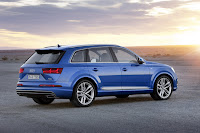





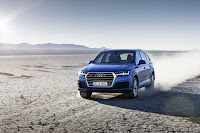

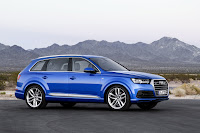


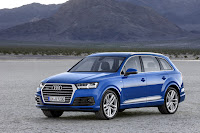

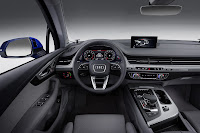

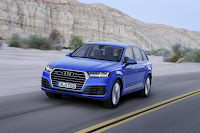

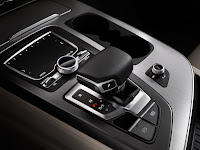


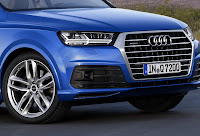


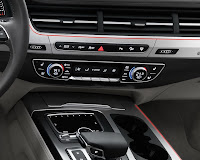
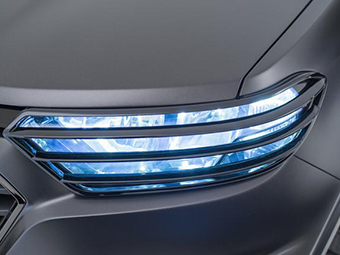











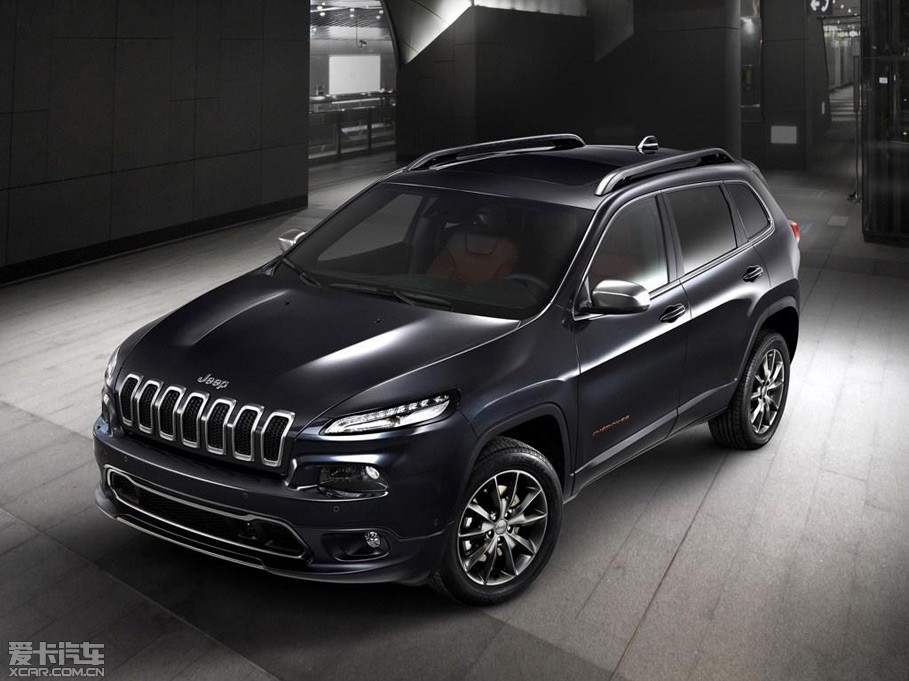

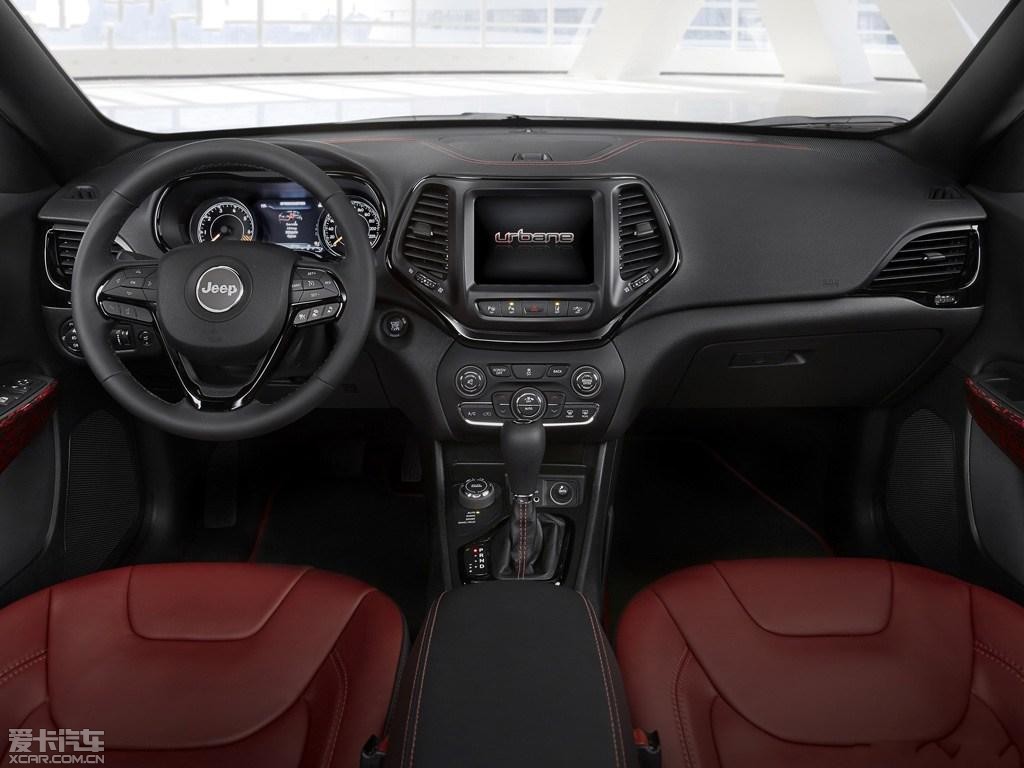
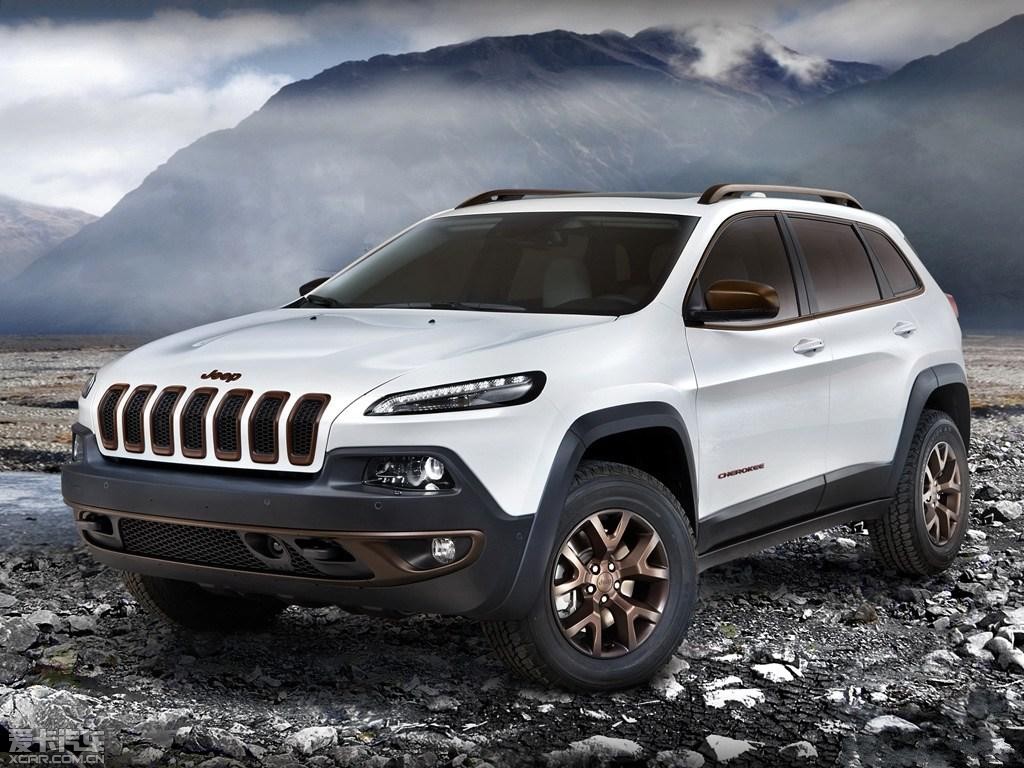



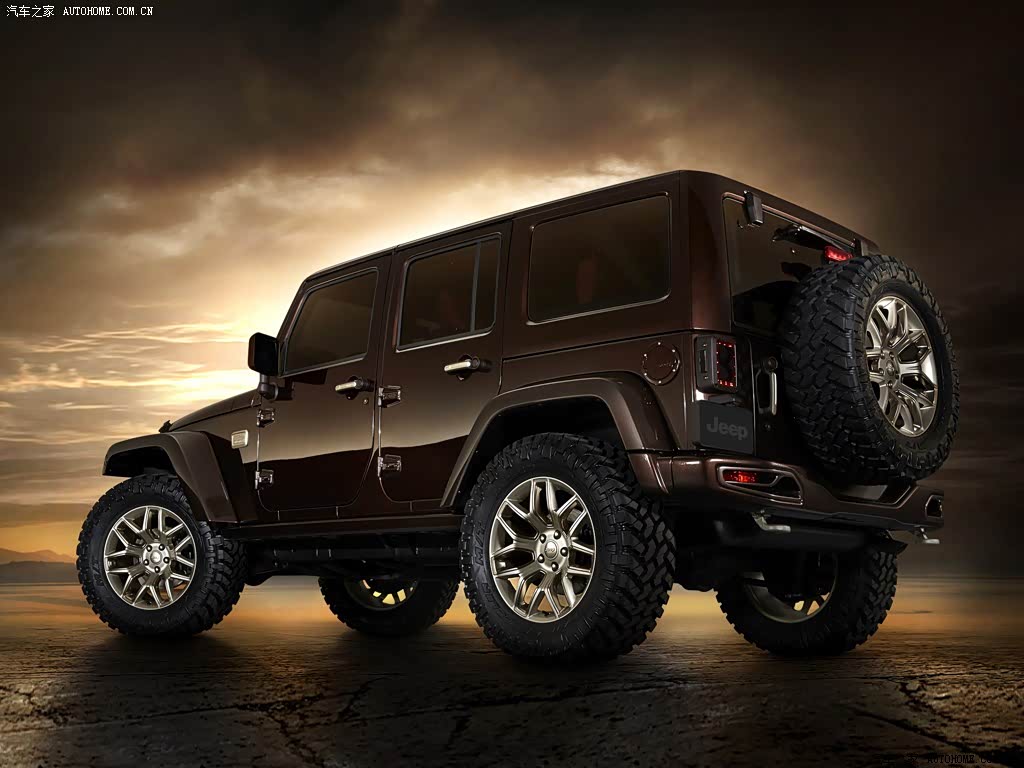
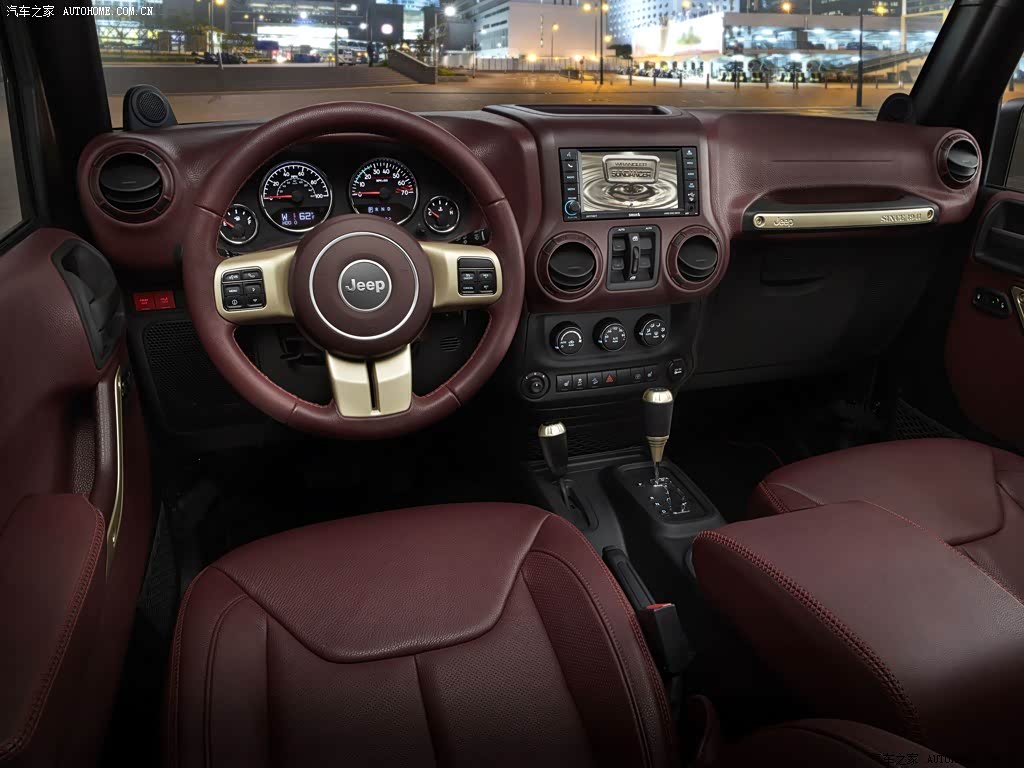
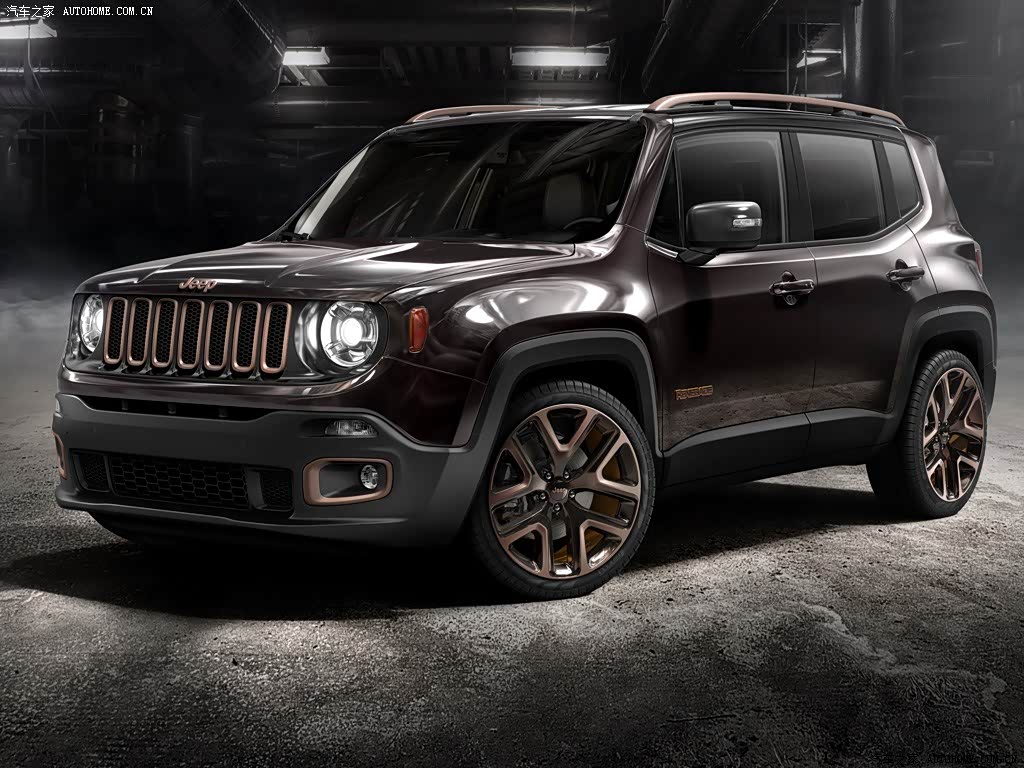
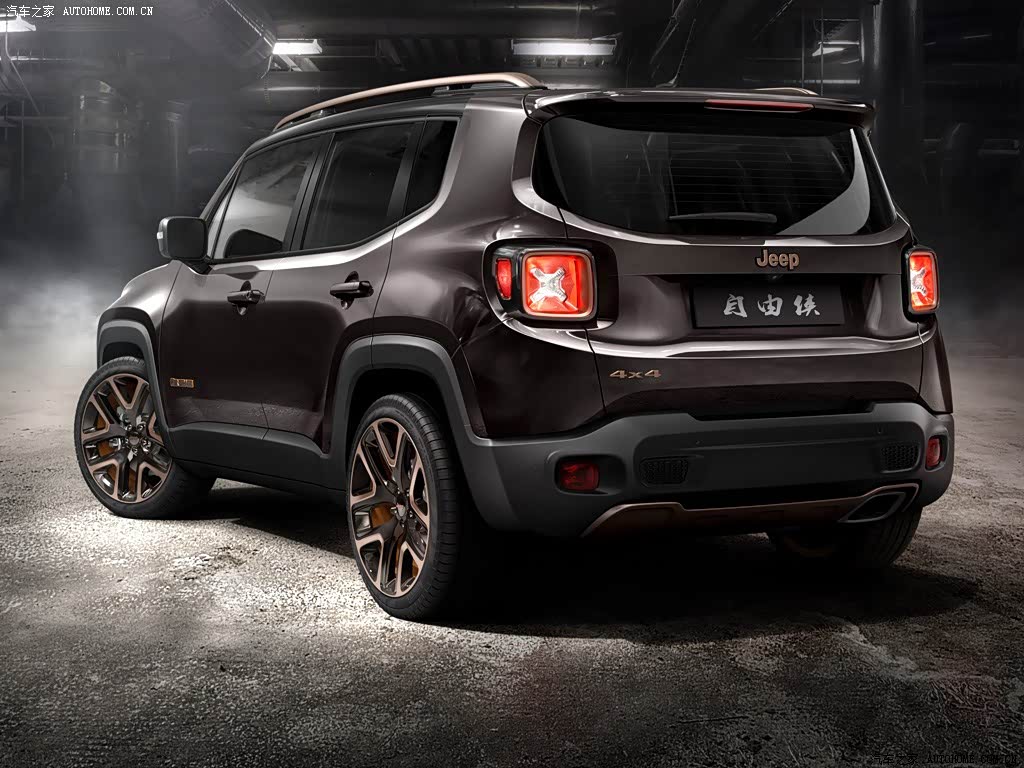
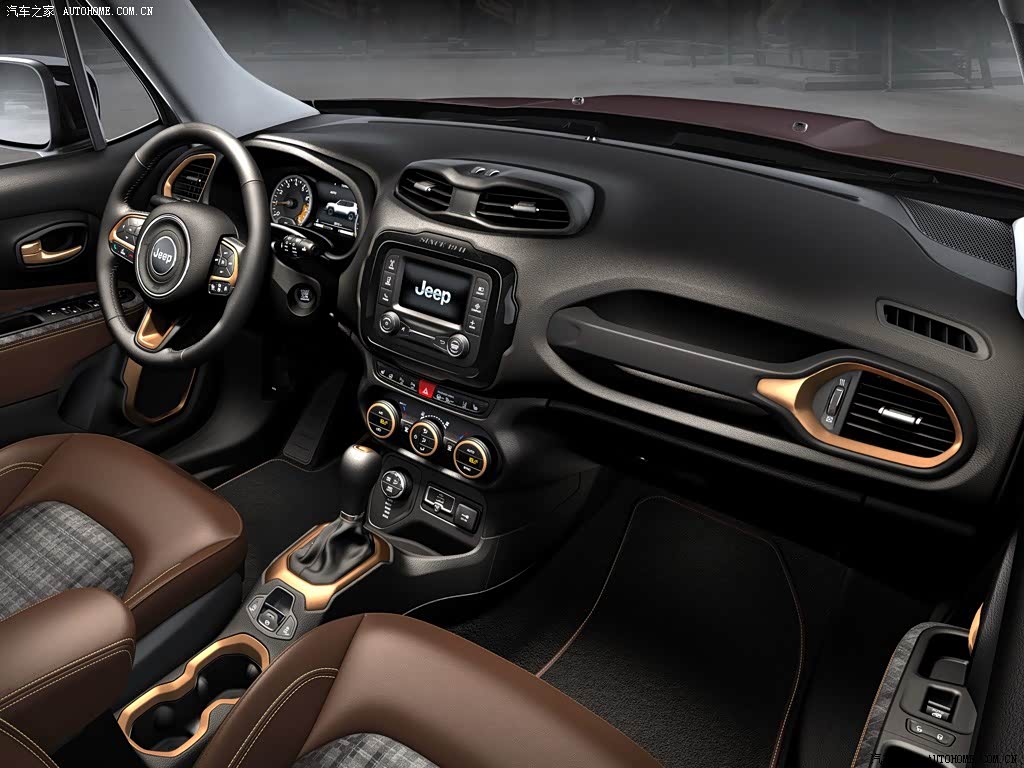




















































Volvo S60 Cross Country (Notizie)
in Scoops and Rumors
Inviato
Volvo S60 Cross Country would be shown in a few hours
it would be look like this one... but a sedan
I'm not kidding!